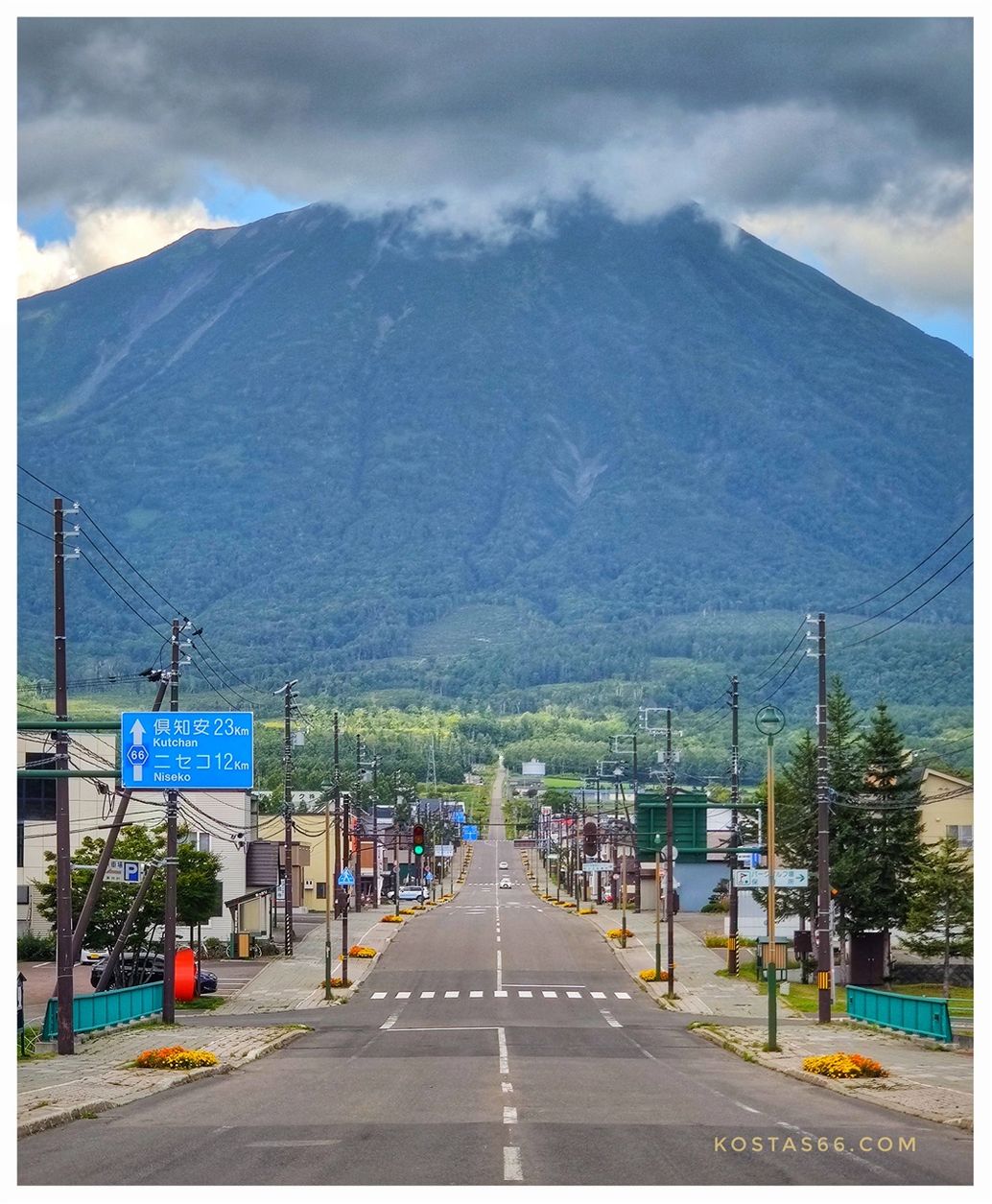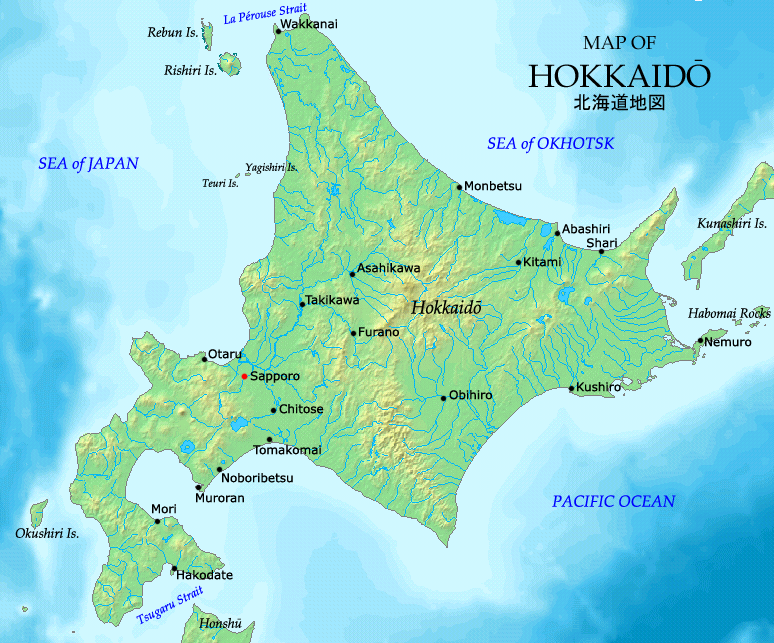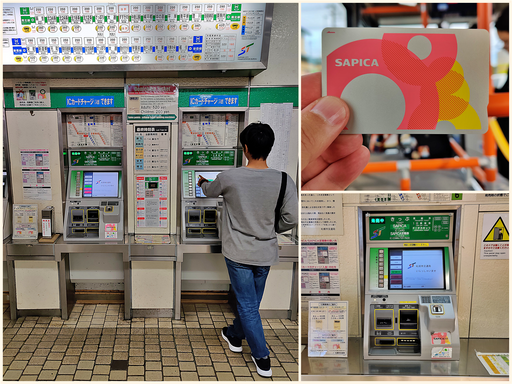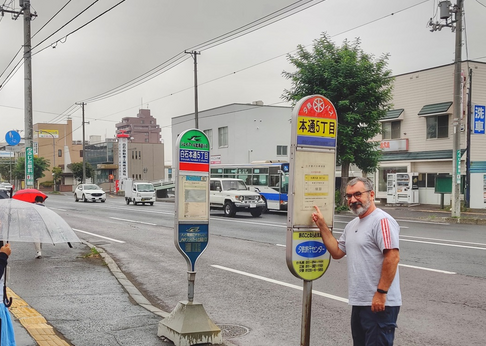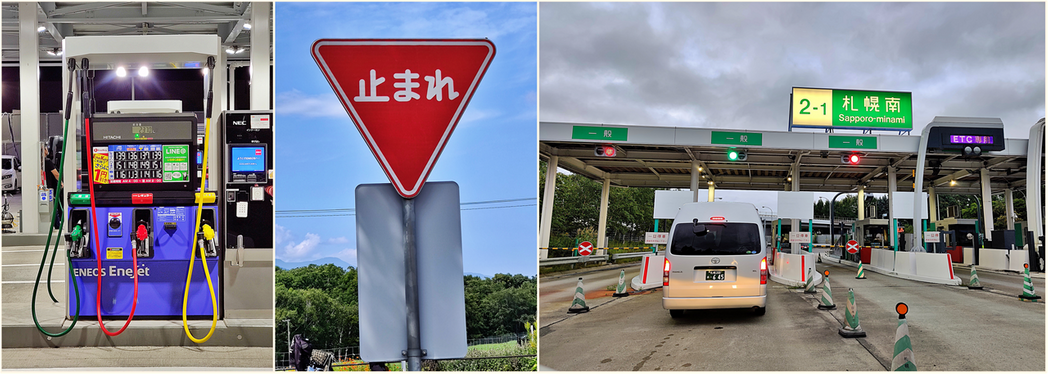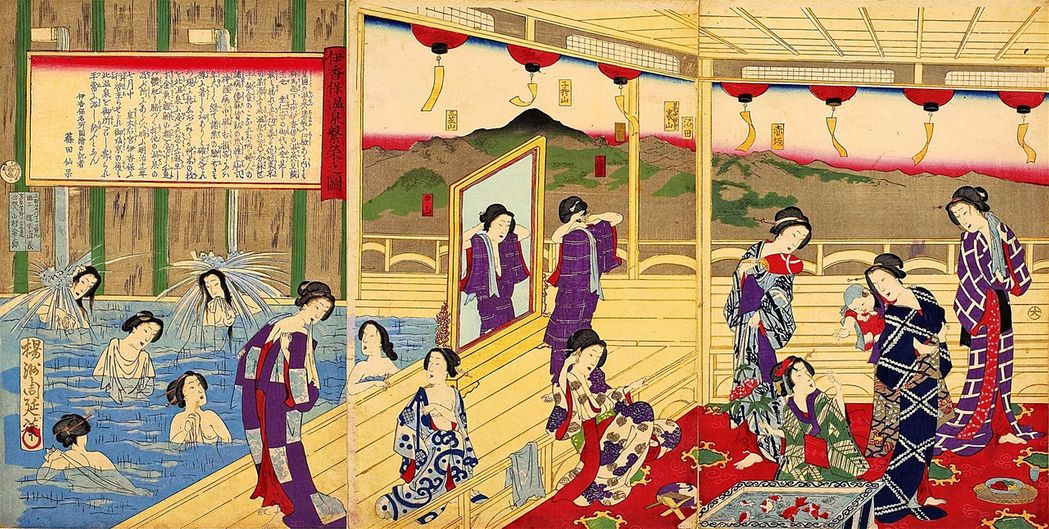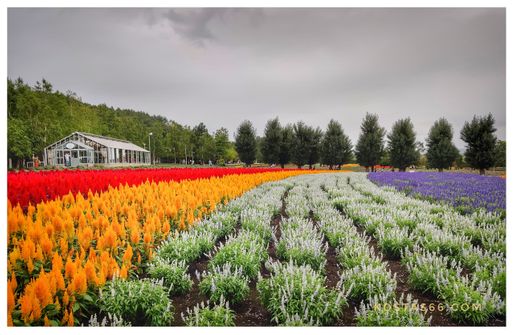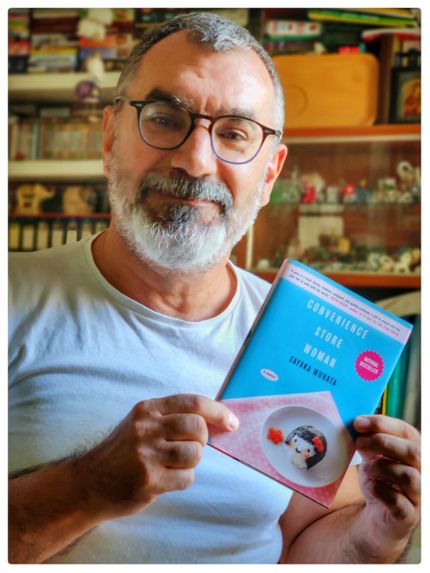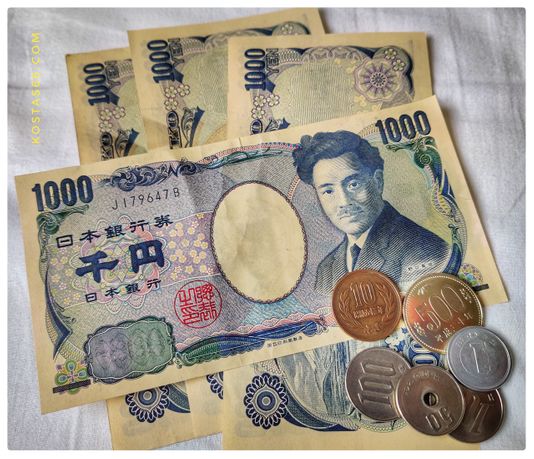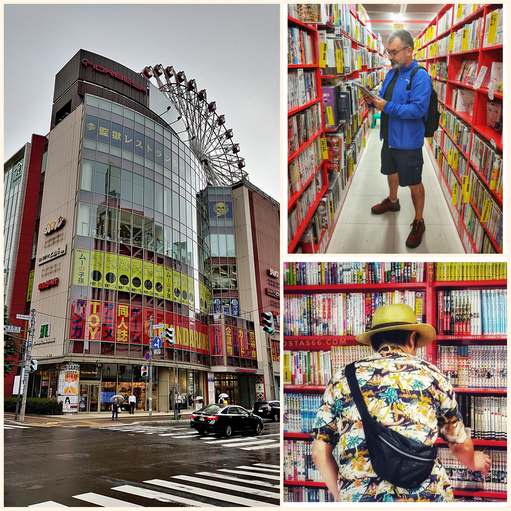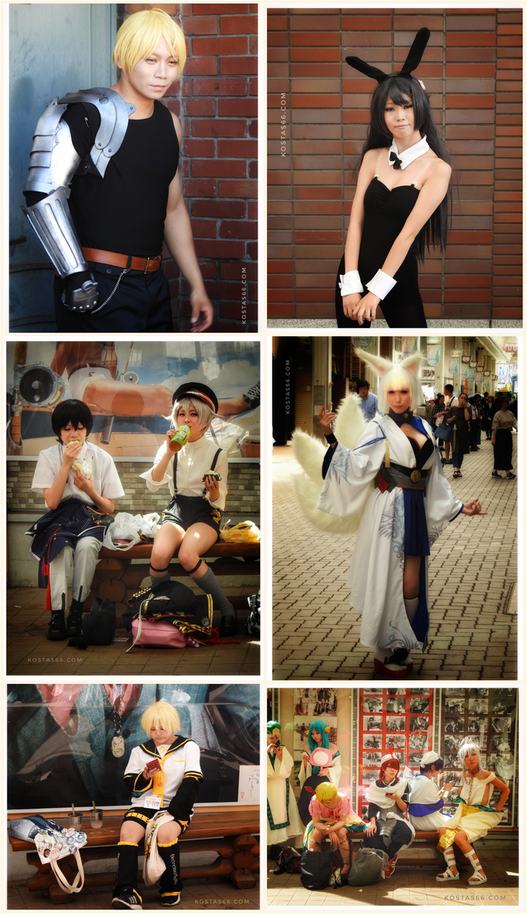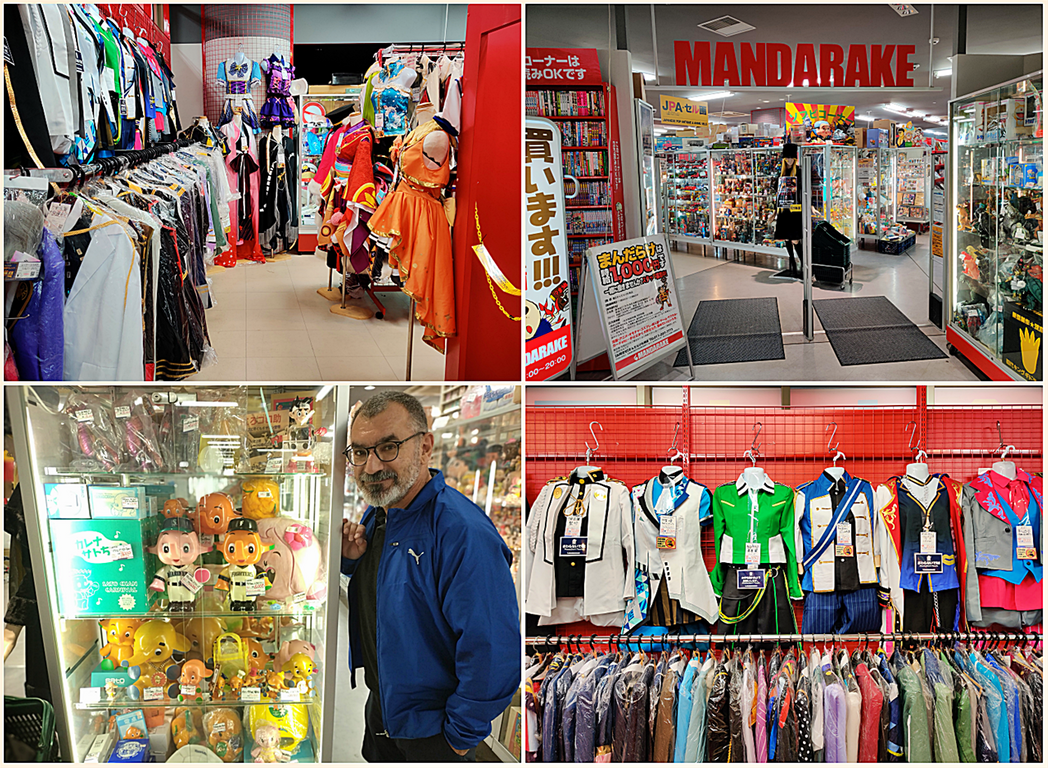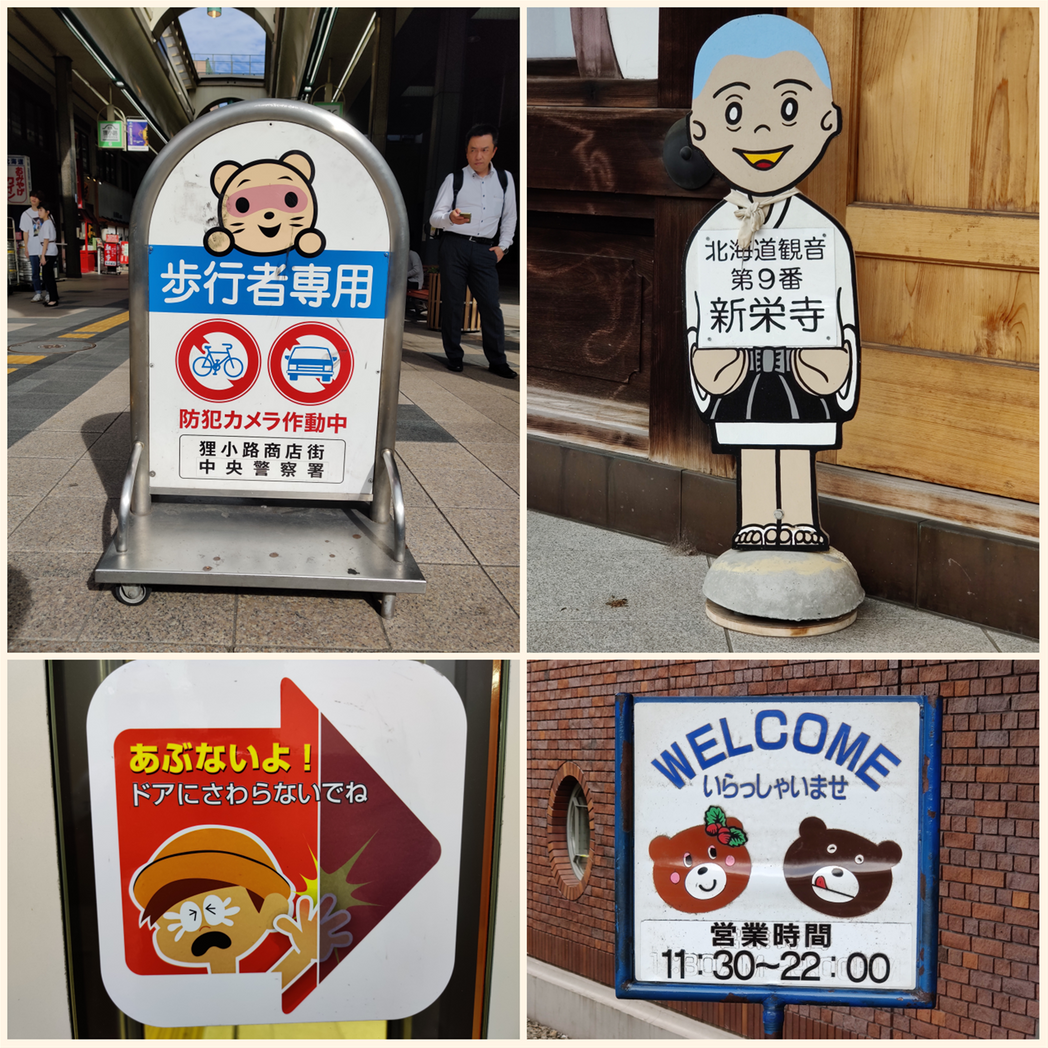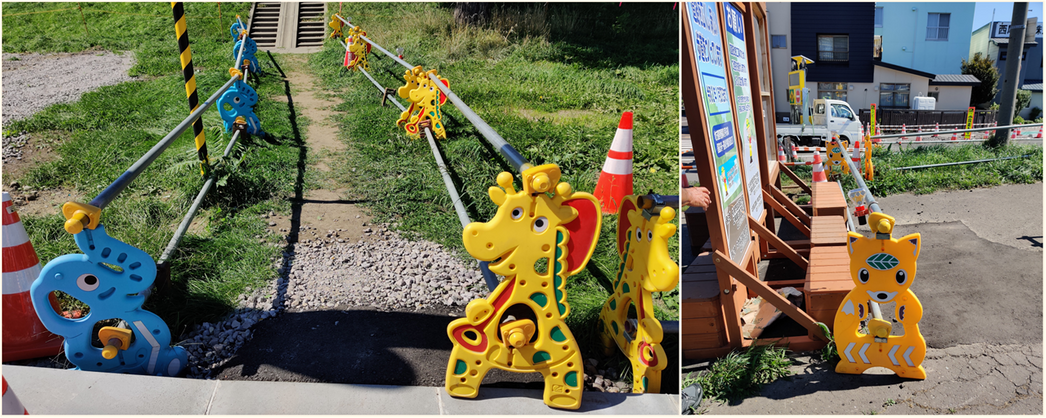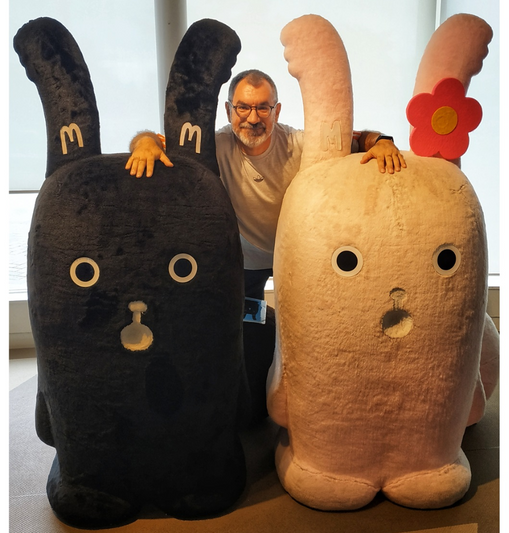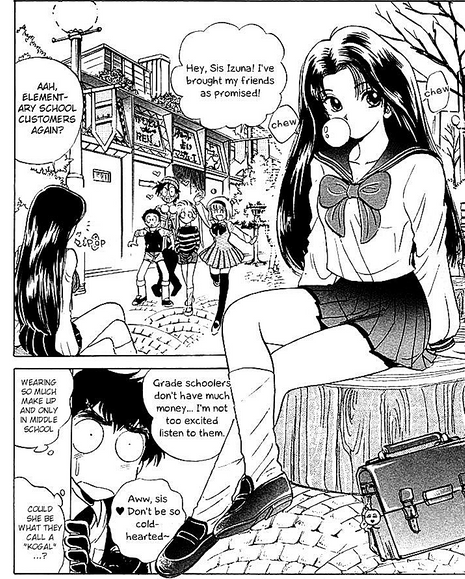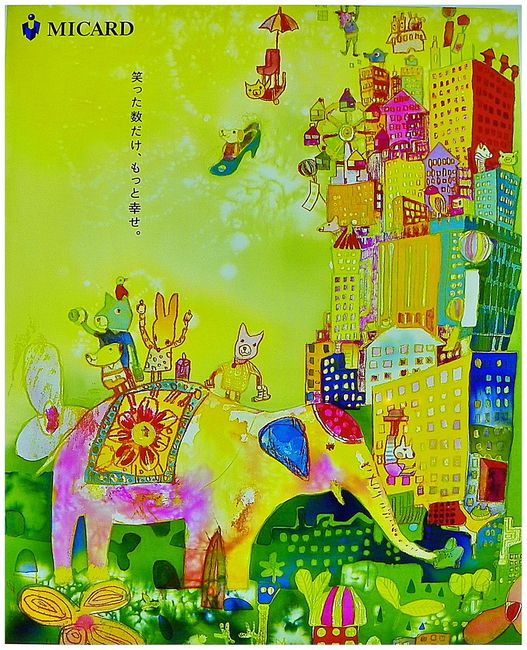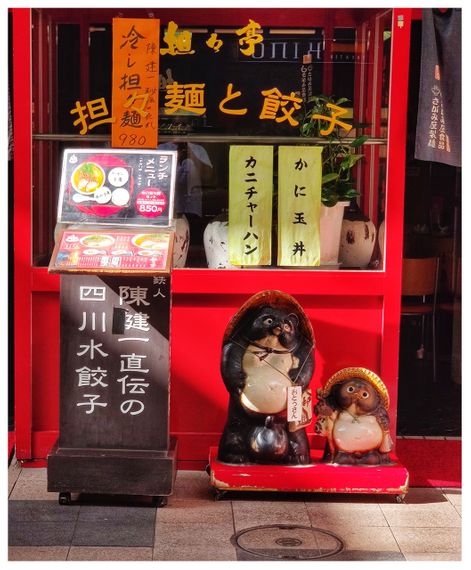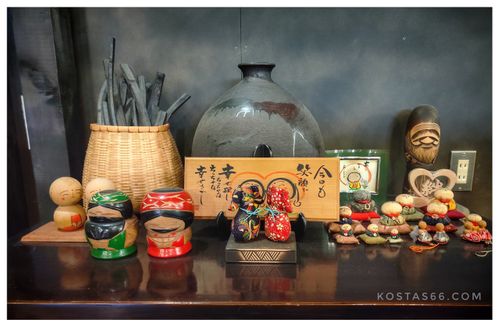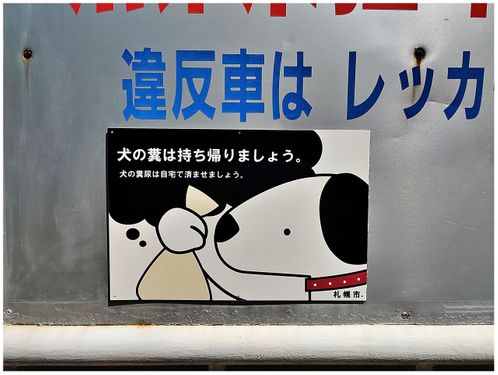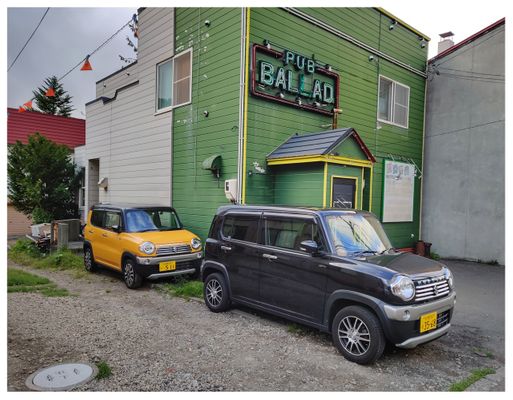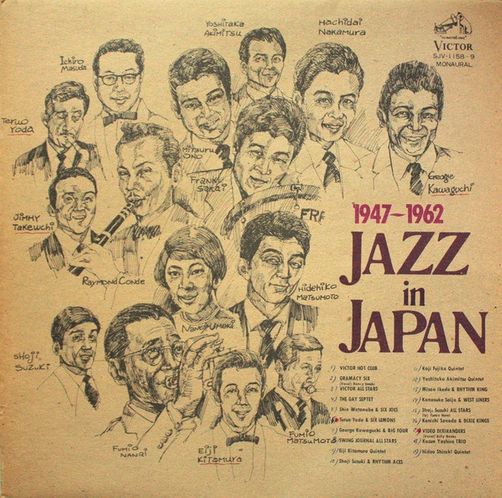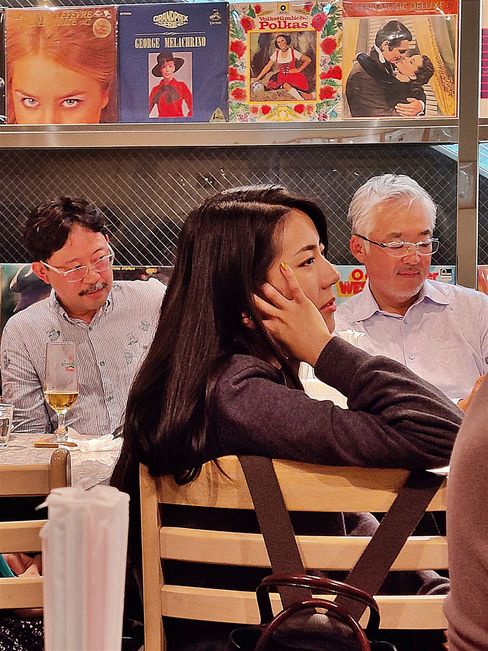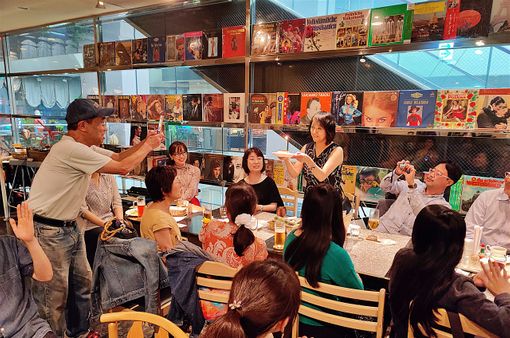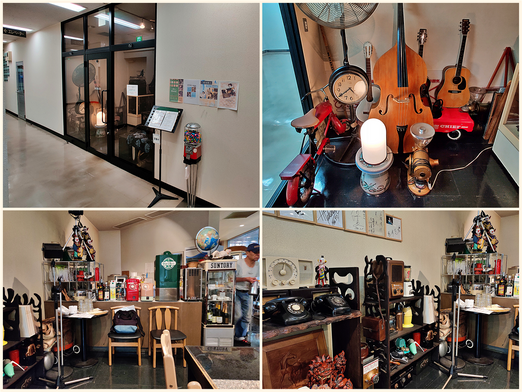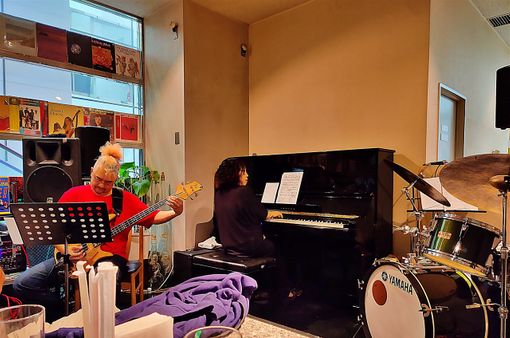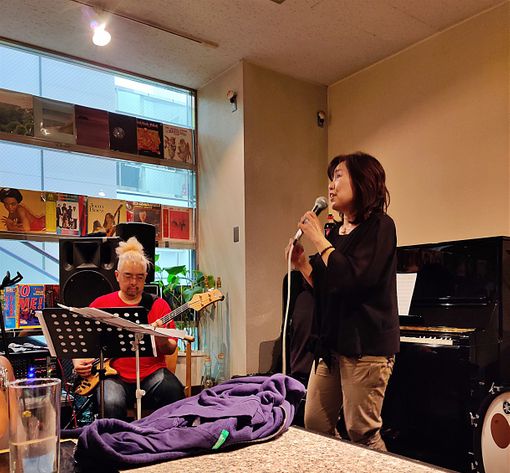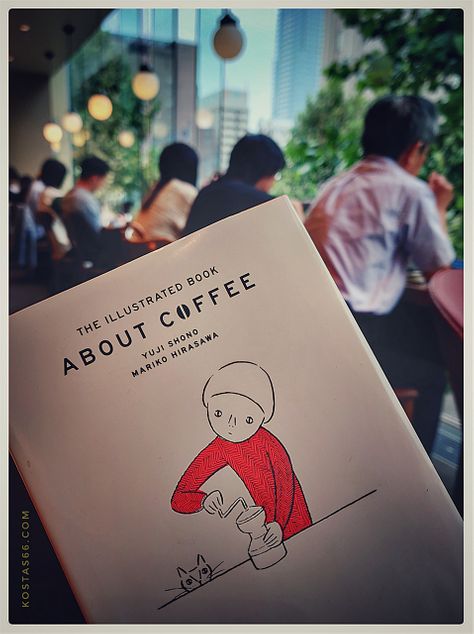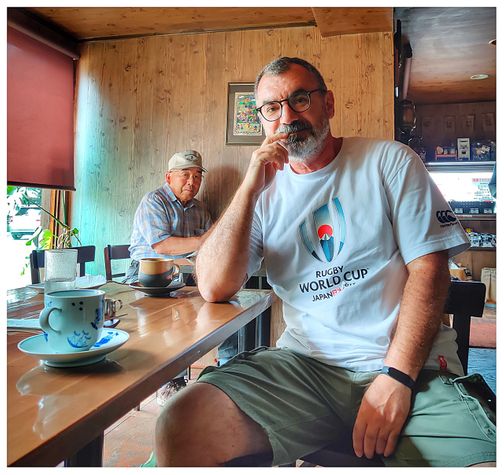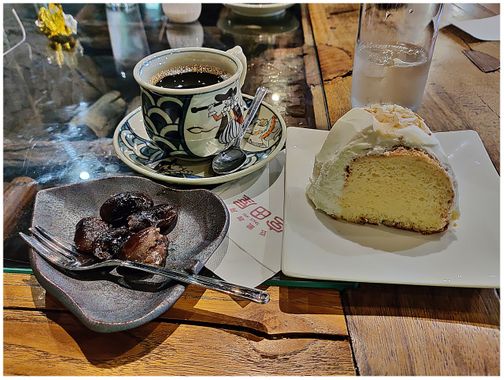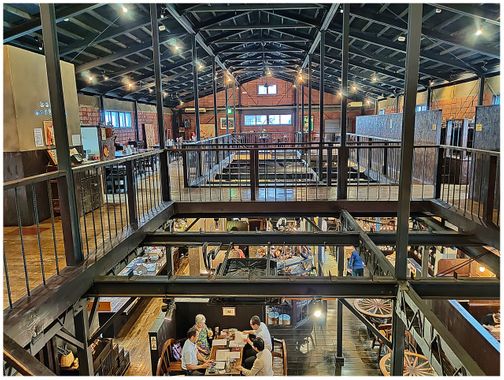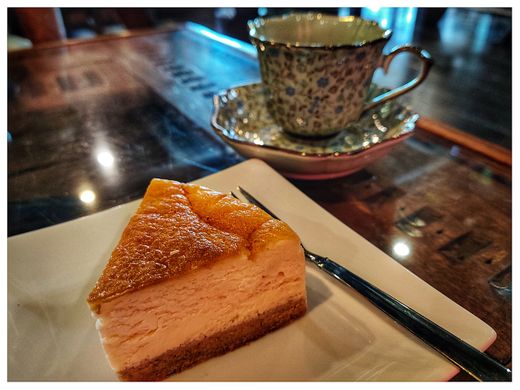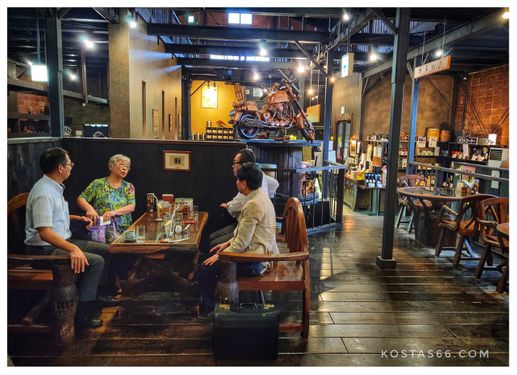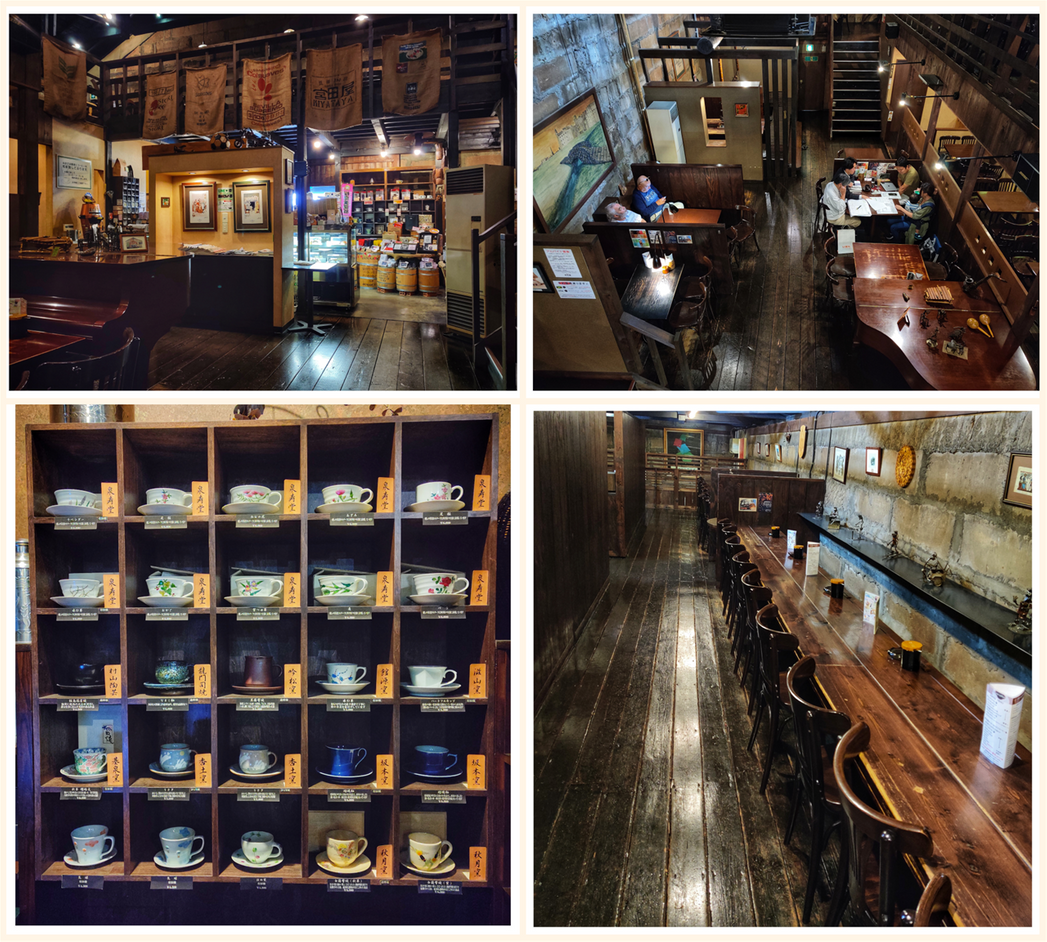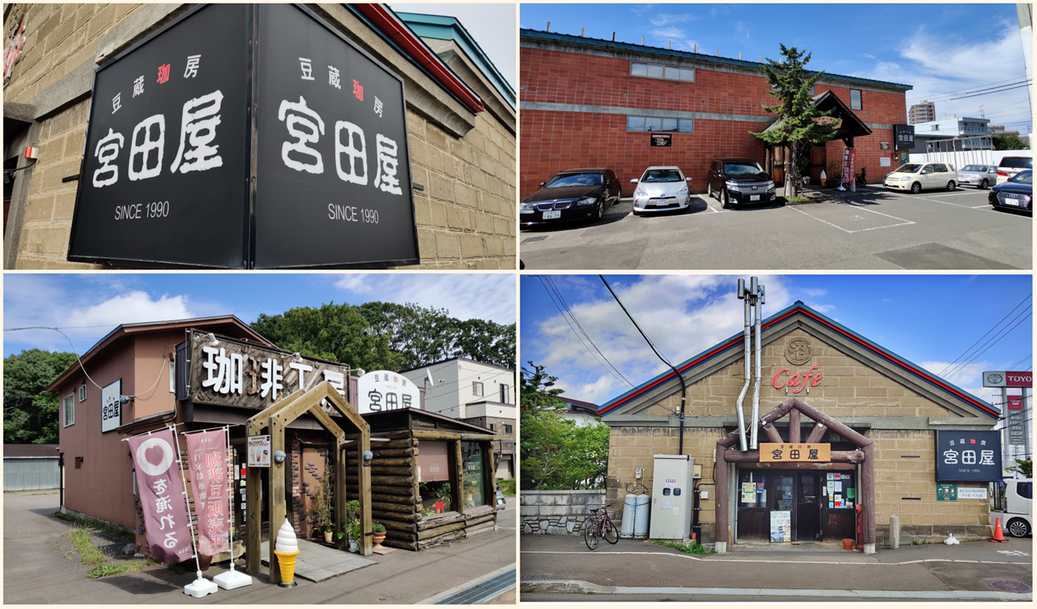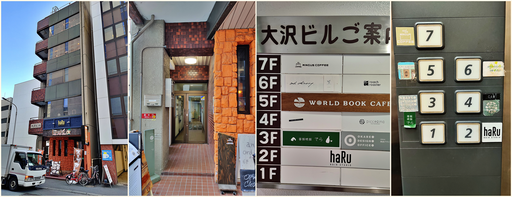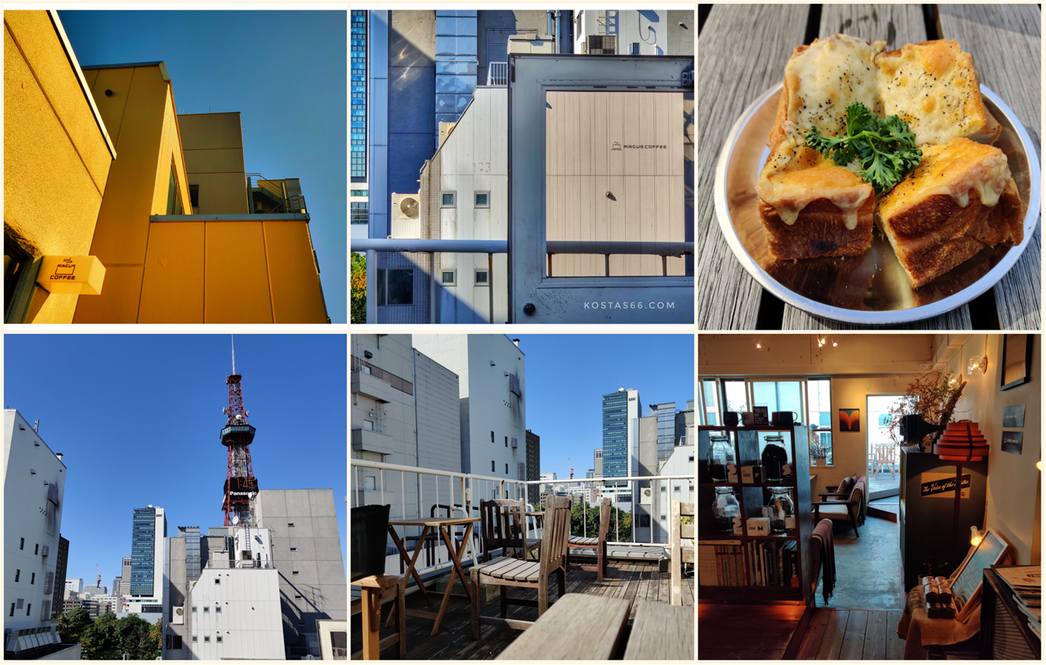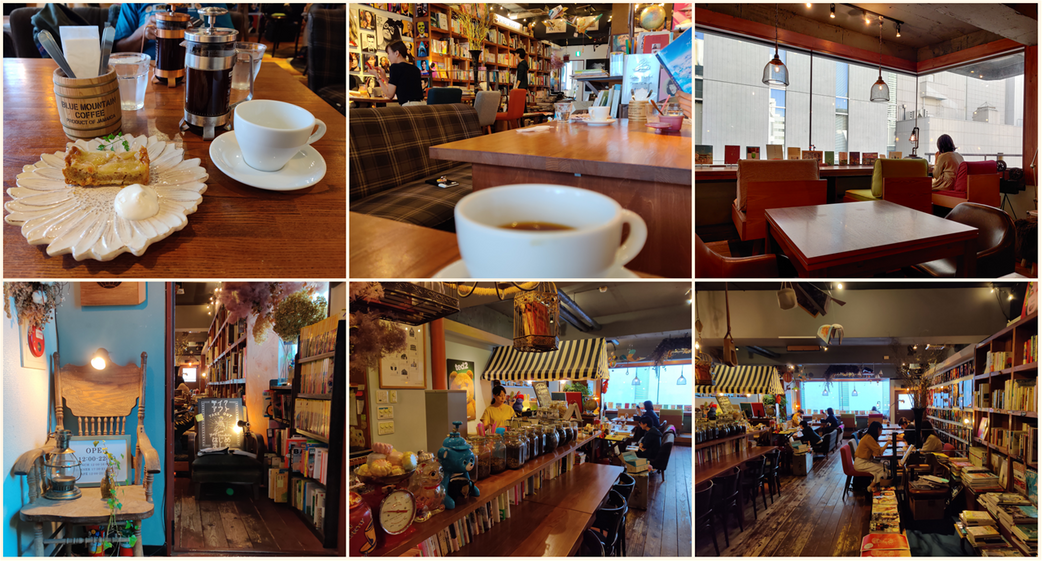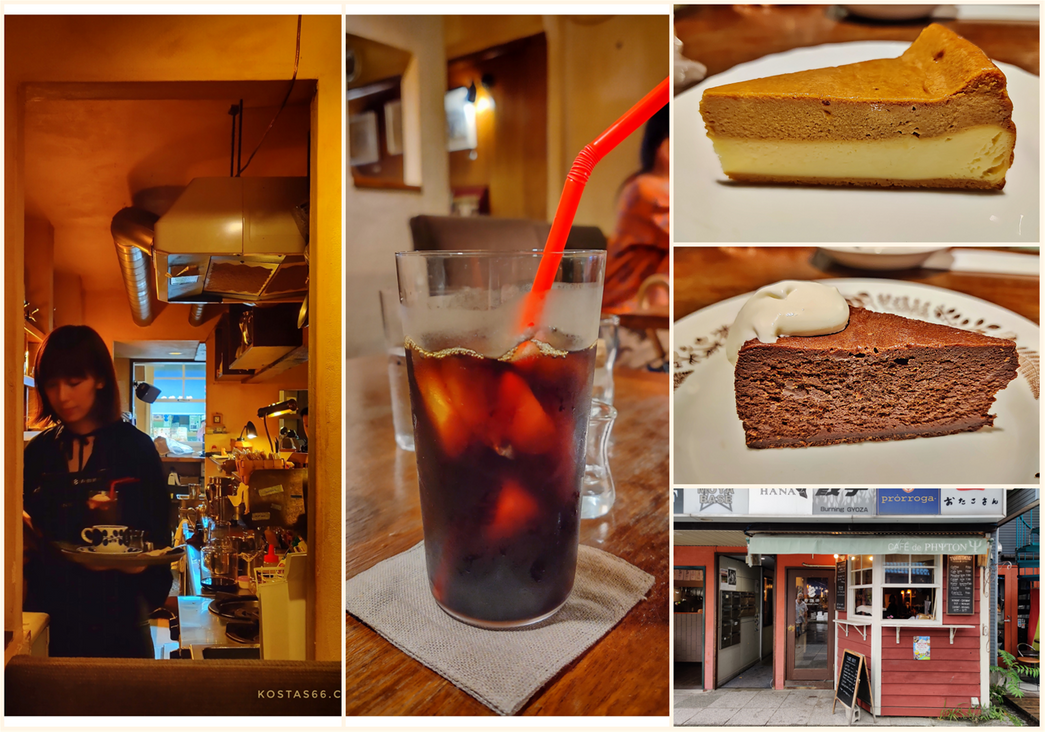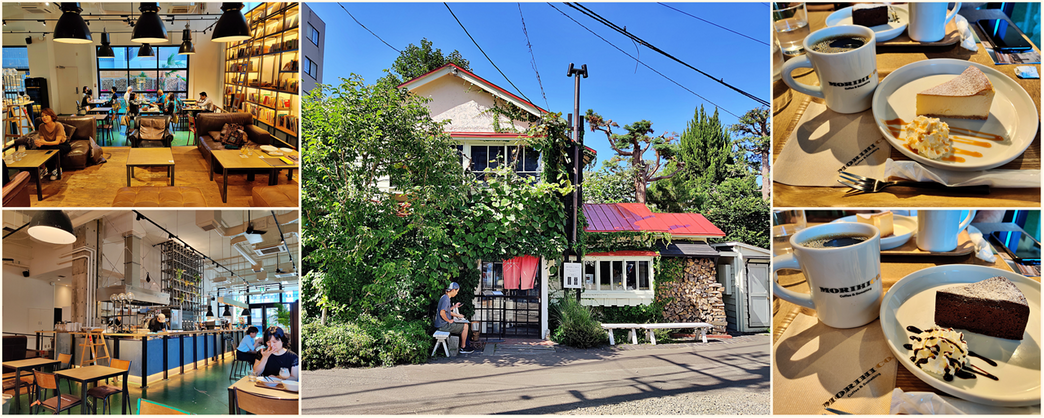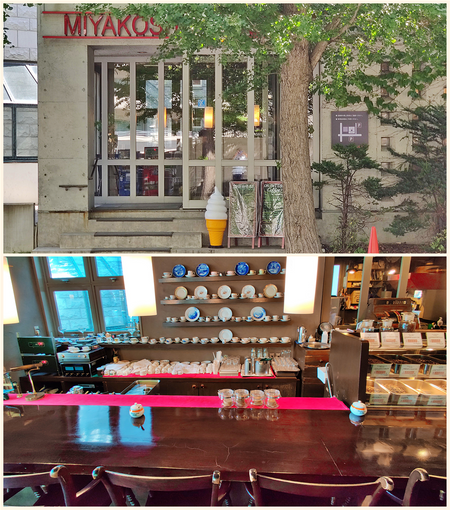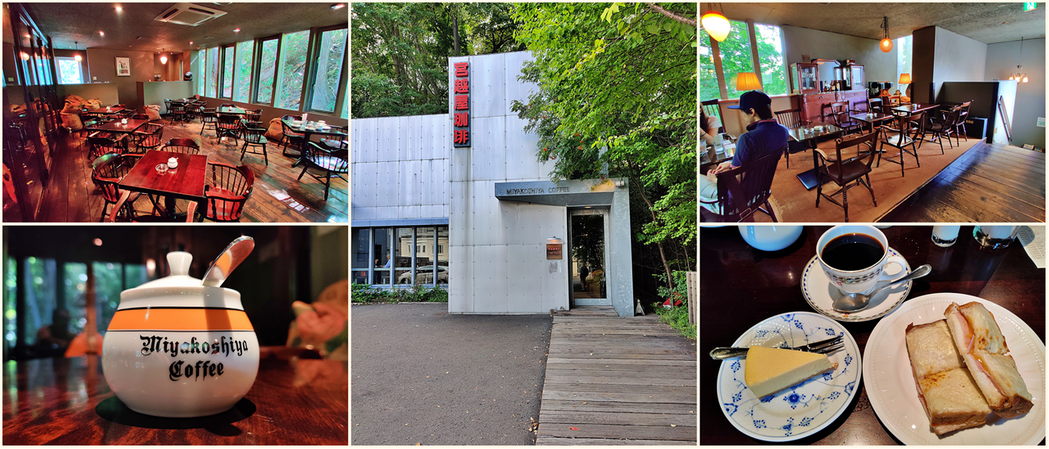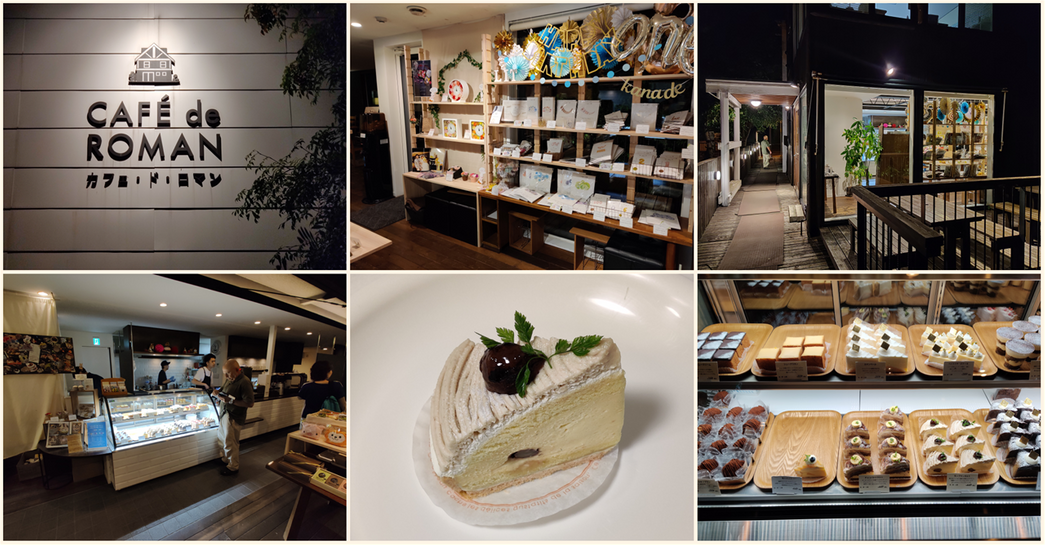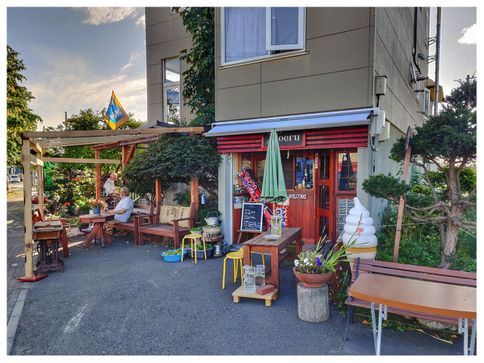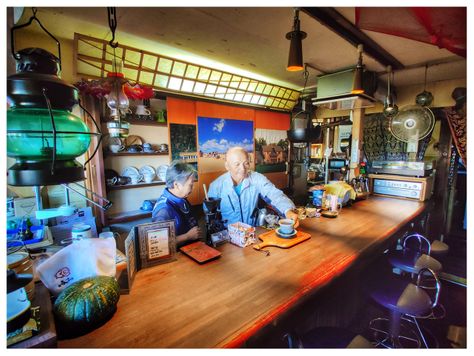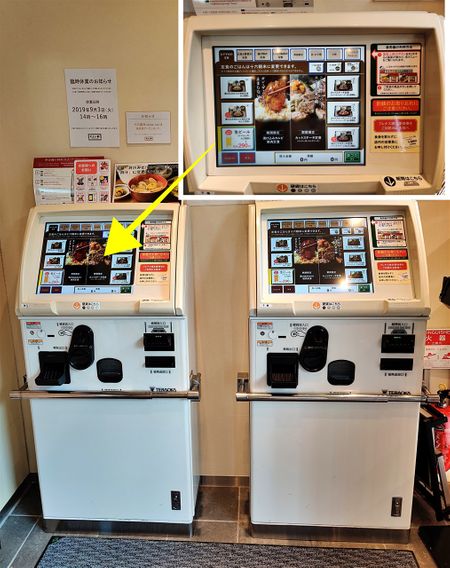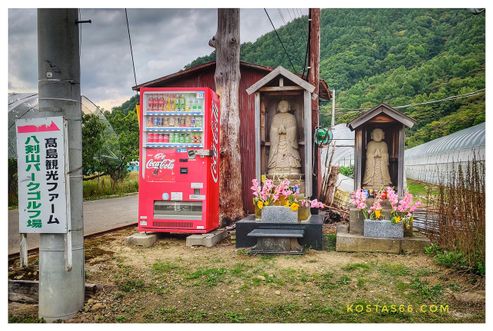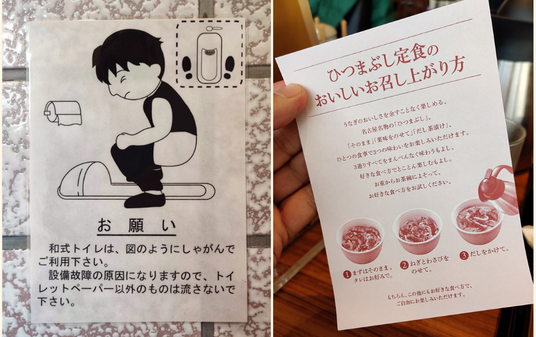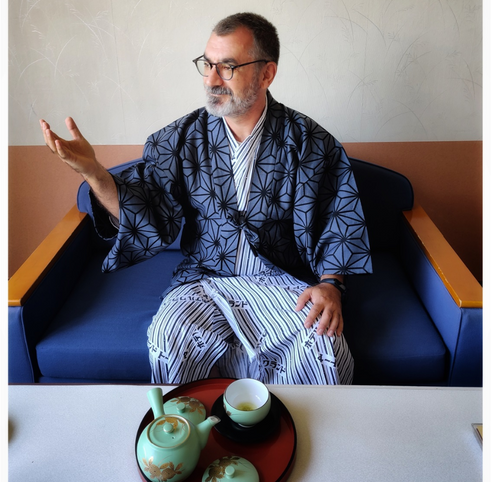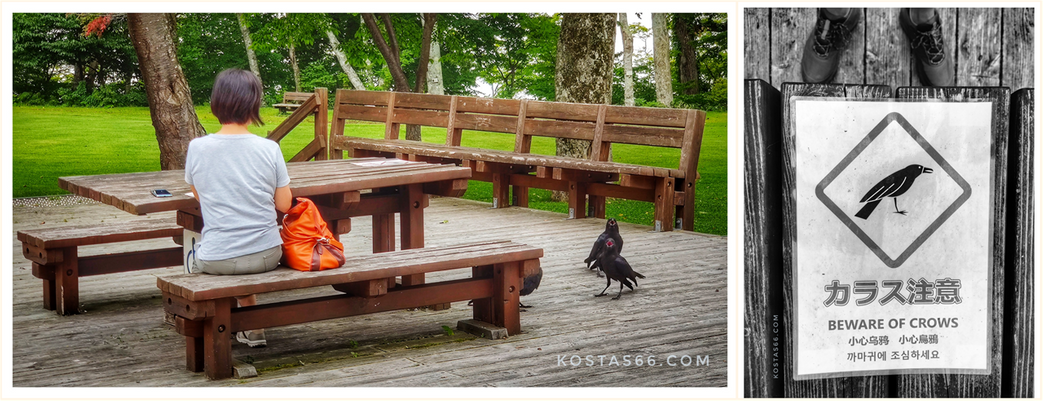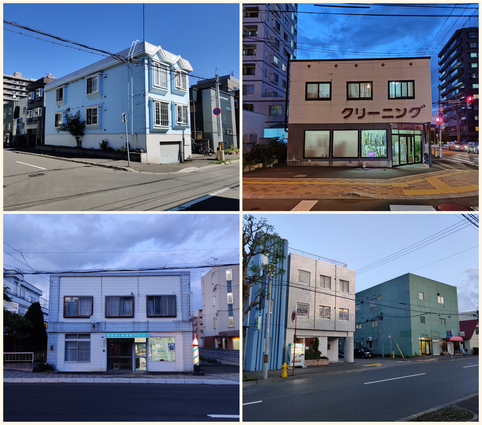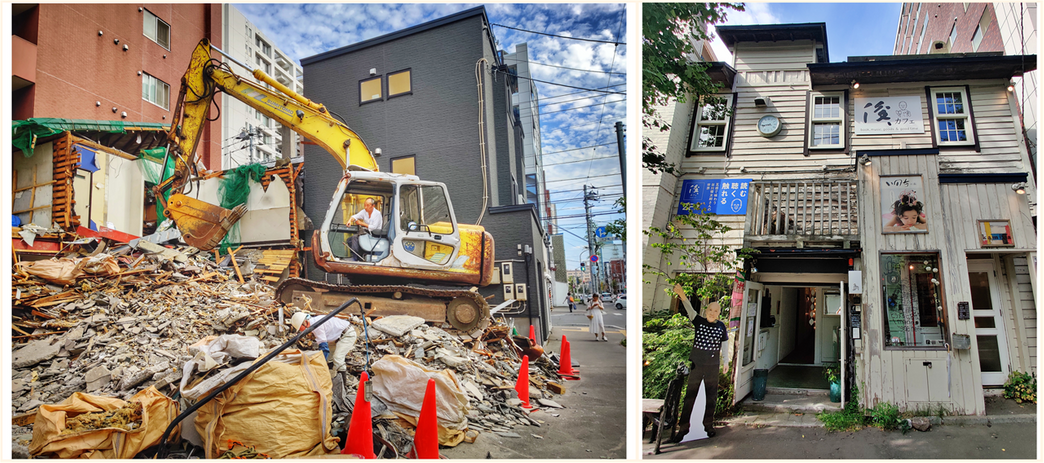HOKKAIDO
Part I (general)
September 2019
Introduction
Hokkaido is the northernmost big island of Japan, and it is known mainly because its capital city, Sapporo, was the 1972 Winter Olympics host city.
Hokkaido is not a typical Japanese tourist destination. If you dream of visiting Japan because you saw on television the crowded streets and the manga-dressed youngsters of Tokyo or the geishas and big shrines of Kyoto and Nara, this is not your destination. Hokkaido is completely different than the rest of the country, maybe because it is not densely populated (the biggest city, Sapporo, considered very small for the Japanese standards), maybe because the Japanese did not really think much about it till the Meiji Restoration in the 19th century. During summer, the place is covered with beautiful flowers, and temperatures are enjoyable for hiking. Still, Hokkaido is mainly a winter sports destination, as it is covered in snow almost half of the year.
Hokkaido was known as “Ezochi” until the Meiji Restoration and took its present name in 1869.
Home of the almost disappeared Ainu tribes, Hokkaido is covered by thick forests. Personally, I cannot think of another place on Earth covered with so many forests, considering that it is not located in the tropics. Of course, this comes with a price: rain. When I say rain, I mean lots of rain, almost every other day!
Mount Yōtei, a volcano in southern Hokkaido.
Besides forests, the island is covered with many small and not that small mountains, which almost all of them are volcanos. Because of the volcanic activity, there are abundant hot springs scattered all over the place, so locals and visitors bath into them frequently, or at least they submerge their feet in there to take advantage of the beneficial properties of the mineral hot waters. Onsens (hot baths) are as important as hammams are for the arab world.
Surrounded by water and crisscrossed by rivers and streams, Hokkaido is the ultimate Japanese place for sea food. People are rivaled only by bears when it comes to salmon and trout hunting. Yes, bears! Hokkaido is the only place in Japan where bears still live and thrive outside cages. The big Brown bear is the symbol of the island, and you see them everywhere, either painted/curved on wood or as teddy bears or as stuffed dead bears (very creepy). When, you hike in the forests, you should always be alert because not all bears are stuffed.
Rich in dairy products (thanks to the Americans, who taught the locals to systematically farm and cultivate the island) and agricultural products, this is a food paradise. Or, at least this is what the Japanese think and advertise.
Hokkaido is large (the size of South Korea) and distances with even a car are long. So, during my 3-weeks stay on the island I managed to visit only the central Hokkaido area, which means I moved inside a radius of about 200km from Sapporo. This is the most densely populated area of the island. If you plan to stay more than 3-4 days, I strongly suggest rending a car.
(*): Remember to bring with you your International driving license, issued in your country before departure, which is issued according to the “Convention on international road traffic of 19 September 1949”.
Arriving on the island
Most tourists enter the island via the New Chitose Airport. The airport is relatively small and is located about 50 km S-SE of Sapporo. The airport is well connected to Sapporo by train, buses and taxis. Of course, you should consider renting a car (*): just proceed to the rent-a-car company office (it is wise to make a reservation well in advance before your arrival in japan) located at the arrivals and a free shuttle bus will take you and your luggage to the rentals building (located some distance from the airport) to collect your car.
Moving around in Sapporo
Sapporo is a small city for the Japanese standards and has a very good public transportation system of buses, subway (there are three lines), trains and streetcar (only one loop line). So, if you are planning to stay in the city and not travel around the island, you do not need a car.
The easiest way to move around in the city is by the SAPICA card. SAPICA is a rechargeable card, which can be used in metro, bus and streetcar. It costs ¥2,000 (¥1,500 can be used for fare, while ¥500 is a deposit) and you buy it (cash only!) from machines in every metro station and at bus terminals. Press the word "english" before doing anything else. The card can be recharged (also at the machines). That makes life easy. For more details on the SAPICA card visit the official site (do not expect everything from me😀!).
When you do not need the card anymore, refund it at any metro station help booth. It cannot be refunded from the machines. You get back in cash the unused money left on the card, as well as the ¥500 deposit.
"Sapica" card is the most useful way to move around in Sapporo (top right). The card can be reload on the ticket machines.
Bus stops outside the very center of Sapporo are just movable posts on the sidewalk of the road, which show the number of the buses that stop there as well as the timetables.. They are unprotected by rain or snow!
Transport fair is not fixed and depends on the distance travelled. So, by entering the metro, streetcar or bus tap the card on the special plate and do the same before leaving the bus/streetcar or exiting the metro.
On buses, passengers must enter from the back door and exit from the front door…it is amusing to hear the driver thank every single passenger exiting the bus…this is soooo Japanese to me😀!
Nevertheless, the city center is small, and you can visit most attractions on foot.
Inside the buses there are screens at the top of the windshield next to the driver, which show some information about the route fair, as well as they announce the next stop - in english, too (right). Press the button inside the bus to anounce your intention to stop at the next stop (middle). Wait sitted till the bus stops and then stand up to get off.
Driving in Hokkaido
Driving in Hokkaido is very easy, because the place is not crowded. It can also get very boring because you may drive for kilometers and not meet any other car at all.
For drivers coming from the Americas or Europe, at the beginning driving on the left side of the road can get stressful. It took me, though, just one day under heavy rainstorm to get used driving on the “wrong” side of the road. Coming back to Greece it took me more time to get used to drive on the “right” side again. You can check all the useful information on driving in Hokkaido at the special publication issued by the Authorities: the “Must-have Handbook for Driving in Hokkaido” which can be downloaded in pdf format here!
The information given there is good and detailed, so I will not give more details on driving, but I will point at a couple of things I noticed after driving all this time there:
👍Yes, if you want to be legal and avoid any possible penalties follow the official speed limits of 40/50/70/80 km/h. In this case you can not go very far away though. Just imagine to be on an expensive “expressway” (tolls are very expensive) and drive to a place 350km away on the speed limit of 70/80 km/h…. forget it! I have driven well above the dedicated speed limits all the time: the typical speed I kept was 120km/h and looking around I can verify that many cars were going much faster than that. The roads are good and safe, so what makes them have such low limits I do not know. It’s up to you to get into the wild side!
👍There are no roundabouts, so the trickiest movement while driving is the right turn. It seems impossible at the beginning, but jus follow the other cars and you will master this, too.
👍Fully stop the car at a stop-sign. Be careful: the stop-sign is very different than the one in Europe or in most countries.
👍As I said earlier Sapporo and other towns have very few traffic. So, one could think it is fast to drive in the cities or through the cities: wrong! In Sapporo almost every single road crossing has traffic lights! You may have to stop at least 30 times to go to your destination. There must be a reason for this, but it was a real pain in the ass.
👍There is no street parking in Hokkaido. There are free parking lots in far away places, but for most of the time you must pay. Most cafes and restaurants have free parking for guests, but not as many parking places as needed. In parks and attractions outside the city, most of the time there is a flat rate of ¥500. In the city it depends on how long you stay.
👍Gas (fuel) is much cheaper than it is in most European countries. This is a pleasant surprise.
👍Rented cars take "regular" gas, so be careful to use the red-colored fuel hose at the self-service stations.
👍Pay at the gas stations with credit card, not cash! You will find out yourselves why 😎.
👍At the toll booths you have to follow the green lines/light and not the ETC/blue ones. Tolls can be paid either by cash or credit cards.
Use the red fuel hose for your rented car (left). The stop-sign is different in Japan (middle). Follow the green line at the expressway toll booths (right).
It's all japanese to me
I would like to point out some of my experiences (in brief), while in Japan. Things that have to do with the Japanese psyche and the way of living and may seem strange, funny or bring into awkward situation the Gaijin (外人; "outsider", "alien", "Non-Japanese", “foreigner").
From the very first trip to Japan, the visitor feels that this country is way much different than almost every other country on this planet. There are probably many reasons for that, and certainly I am not an expert on this matter, but maybe the most important reason is that Japan has been isolated from the rest of the word for more than two centuries. When it finally opened up in the second half of the 19th century, following the era we call Meiji Restoration, it “had already missed” all the years that brought people together (not always for the good, though) and shaped the modern word we see today. When other islanders, like the British, were conquering the world and imposed their law and order and spread the “European civilization” to the edge of the world, Japan was guarding its sea borders in the most austere way. And when it finally opened up, it embraced the new brave world’s developments in the most hungry and efficient way, but kept its psyche and inner order rather intact. Japan today is a peaceful country, but its neighbors cannot forget the atrocities and the crimes the country committed in the first half of the 20th century. Maybe, even that, has to do with the different way of thinking of this apparently gentle, but tough people.
Onsen
Japanese are crazy about onsens, which is part of their traditional life. In a modern world, where virtually everyone has a private bath at home, the number of traditional public baths has decreased, but the number of sightseeing hot spring towns has increased it is amazing.
Onsen is a Japanese hot spring; the term also extends to cover the bathing facilities and traditional inns frequently situated around a hot spring. As a volcanically active country, Japan has thousands of onsens scattered throughout all of it.
"Interior of a Public Bath" by Ochiai Yoshiiku (19th century).
Onsens come in many types and shapes, including outdoor and indoor baths. Baths may be either publicly run by a municipality or privately, often as part of a hotel, ryokan, or bed and breakfast. An onsen can just be a natural or artificial pond in the middle of a town, where you can put your tired feet to relax after a day shopping.
Onsens (by definition) use naturally hot water from geothermally heated springs. Onsens are different from sentō, indoor public bath houses where the baths are filled with heated tap water.
As I hate hammams (due to the steam inside them), I was very reluctant about visiting one. At some pointe I decided to visit one, but of the open air type. I must admit, if I was living in Japan, I would visit them often. For the best experience choose an open onsen and if possible, located in the woods or with good vistas.
The rules to enter an onsen are very strict and you will see many posters or read many blogs especially about the little towel you must hold and cover your nudity. I recommend reading them carefully before visiting an onsen, but do not stick to them endearingly if locals don’t. You better bring your own towels , so you do not have to pay for them and after cleaning yourself at the washing room, cover your private parts with the small towel. I did the same, but when I entered the onsen itself I realized than almost no one else did the same. People were walking around or leaning against the walls completely naked in a rather sensual, but not sexual, way. So, when in Rome do as the Roman do… at your own risk of course!
Summer in Furano area. Four seasons are very distinctive in Hokkaido.
Conbini
There are convenience stores in almost all countries in the world. We call them “evga” in Greece. But nowhere else the convenience stores have reached such an iconic status, as the conbini in Japan. Convenience stores (コンビニエンスストア, konbiniensu sutoa), shortened to conbini (コンビニ) are almost synonymous with Japanese modern way of life.
In these small shops one can find almost everything. During my stay In Sapporo, I used to visit my next door conbini at least once a day, mainly for snacks and the necessary matcha Hagen Dazs ice cream cup, an after-dinner treat.
It is said that in Japan there is a conbini for every 2.000 inhabitants. They are found literally at every street corner in the cities but are also present in smaller towns and rural areas. The conbini stores are so widespread that people are surprised when they hear of a place without a conbini. (if there is such a place).
Seasons
Japan has four seasons. So what? Don’t we all of us living away from the tropics have four seasons? The Japanese believe that only they have distinct seasons and the rest of the world lives in an endless summer or winter. The reality is that they pay too much attention in season changing and they celebrate everything that has to do with it: I do not believe there is another nation on this planet that celebrates every single color change of the foliage and every tree blooming!
In Hokkaido exist the widespread brands, but also some local ones. The most usual brands are the: Seven-Eleven, Sunkus, Lawson, FamilyMart, Seicomart and Hasegawa Store (local convenience store chain in Hakodate).
The original purpose of the conbini is selling snacks and food for busy people at every hour of the day or night (usually 24/7). While the variety of foodstuffs you'll find at a conbini can be overwhelming, there are some basic categories that you'll find at any location of any chain (*): the sando (sandwiches), the onigiri, the bento, buns, instant noodles and, of course, the candy. You can also find fresh products like eggs or fruits, but the supply is very limited (the only fruit available is usually banana and apples), and quite expensive.
Since there are usually seats inside conbini, you can often eat on the spot, and hot water is available upon request for instant noodles. If there isn't any seating, just take your food outside and eat right in front of, or close to, the store — eating while walking isn't considered polite, but if you're doing it in front of a conbini, no one will be offended. The most important thing to keep in mind is how conbini food appear and disappear without notice. Keeping an open mind and trying anything that catches your interest is the way to avoid any regrets.
Besides food, the conbini stores sell all kinds of products like band aids, pens, toilet paper, batteries, umbrellas, clothes, some mainstream medicines, CDs, etc. It is also possible to buy alcohol and cigarettes, but only in stores that indicate it on their signs with the Japanese “タバコ" or "酒". You can also find small toilet kits that come in handy when you are unable to go back home, or prepaid cards for cell phones. The conbini stores offer many services like bank, postal or transportation services and almost all of them host an ATM.
(*) Bento. Though bento, like most conbini foods, change seasonally, they come in a few basic forms. The donburi (rice bowls) include gyūdon (thin strips of marinated beef over rice), katsudon (deep-fried pork cutlet scrambled with eggs over rice), and oyakodon (chicken and scrambled eggs over rice). There's also curry rice (Japanese curry is sweet and thick, bearing little resemblance to other curries around the world) and pastas, which are often legitimately al dente. It's worth noting that you can have any bento heated up to eat right there in the conbini, if you want, and at just a few hundred yen, it's an extremely cheap meal. Oden. Near the registers of most conbini there are often large, heated metal trays or pots. Inside the trays are different ingredients (tofu, daikon radish, boiled eggs, and fish cakes) floating in a hot, fragrant dashi broth. This is oden, Japan's winter comfort food. While the absolute best typically comes from chefs who have spent a lifetime perfecting their broth and curating the ingredients to pair with it, the conbini version is fun to try. Instant Noodles. There are generally two types of instant noodles: ramen and yakisoba (pan-fried noodles), and dozens of variations of both styles. Each conbini offers different flavors. New flavors are frequently introduced to keep fans interested, but there is one constant: the bigger packages are generally of higher quality and come closer to matching the taste of the real thing. Buns. These are the typical Chinese soft and white bread snacks filed with meat or vegetables. Even though, the most common bun is the pork bun, some of the fillings in the Japanese bun are unconventional: Japanese curry with cheese, marinara sauce and cheese, red bean paste.
“Convenience Store Woman,” a novel by the best-selling Japanese author Sayaka Murata, is the first of her ten novels to be translated into English.
The book centers on a thirty-six-year-old woman named Keiko Furukura, an oddball who is endlessly puzzled by human behavior. But, the real protagonist of the novel is the Hiiromachi Station Smile Mart, a “transparent glass box” in a pristine and anonymous business district.
The author herself worked at a convenience store for nearly eighteen years. It is a short and easy to be read novel, that gives an indiscreet glance of the “life” inside a conbini.
“Convenience Store Woman,” a novel by Sayaka Murata.
Cash and tipping
What I really like in Japan is that there’s no need to tip in Japan. I always thought that it is at least awkward to have to leave a tip. The ridiculous American necessity to tip is both offensive for the employees who do not get paid enough and it is expected from you to complete their salary by tipping and also offensive for the customer who is forced into a situation where he should not be. It is even worse in Europe, where people get paid for their service, but got spoilt by the extra money they may get as tipping. No need to tip anyone at all in japan. People get paid for what they do and may even take offense to customers leaving a tip. Oh, I love Japanese pride!
Otaku
One should think that in a technologically developed country like Japan, cash has disappeared from everyday life as a form of payment. In the contrary! Make sure your wallet is stoked full of yen to avoid the awkward situation where the restaurant you just had a tasty meal does accept cash only (“kyasshu” in Japanese).
Hotels, large department stores, convenience stores and most gas stations accept cards, but most restaurants, bars and cafés accept CASH ONLY.
So, make sure you regularly visit an ATM to draw plenty of these colorless and boring Japanese banknotes!
Otaku (おたく/オタク) is a Japanese term for people with obsessive interests, particularly in anime and manga. Its contemporary use originated with Akio Nakamori's 1983 essay in Manga Burikko.
Otaku may be used as a pejorative; its negativity stems from a stereotypical view of otaku and the media's reporting on Tsutomu Miyazaki, "The Otaku Murderer", in 1989. According to studies published in 2013, the term has become less negative, and an increasing number of people now self-identify as otaku.
Otaku subculture is a central theme of various anime and manga works, documentaries and academic research. The subculture began in the 1980s as changing social mentalities and the nurturing of otaku traits by Japanese schools combined with the resignation of such individuals to become social outcasts. The subculture's birth coincided with the anime boom, after the release of works such as Mobile Suit Gundam before it branched into Comic Market. The definition of otaku subsequently became more complex, and numerous classifications of otaku emerged.
In 2013, a Japanese study found that 42.2% self-identify as a type of otaku. This study suggests that the stigma of the word has vanished, and the term has been embraced by many.
Sapporo branch of Mandarake.
Anime characters in the streets of Otaru for the "2019 Otaru Anime Festival".
A place of meeting for the Hokkaido otaku is the Sapporo branch of Mandarake shop. Mandarake founded as a used bookstore specializing in manga in 1980 and today has several branches all over Japan.
The company focuses on the purchase and sale of a wide range of collectables and otaku-related goods, including anime- and manga-related items, DVDs, CDs, toys, figurines, trading cards, video games, cosplay items, animation cels, and dōjinshi (self-published works). The place is really interesting to visit, even for the non-otaku customers and certainly a place to visit in the center of Sapporo. The bookshop is located on the 2nd floor (2F, in Japan the ground floor is called 1st floor, so actually the 2nd floor is the first floor above the ground level) of a small shopping center at the Susikino area.
Inside "Mandarake" in Sapporo.
Kawaii
One thing that immediately strikes you about Japan is that there is an awful lot of cuteness going on. Wherever you look around it seems that everything is addressed to children not to adults. We all wish we could be 17 again, but in Japan it seems that everyone wants to be 7. Many Japanese will, to our eyes, act emotionally rather than reasonably. I do not know what is wrong here! I read things like “this is seen as an admirable trait in Japan; to many, logic is the root of the cold-hearted, and persuasive words are for the serpent-tongued”. Bullshit! (Excuse my French). All these do not make any sense to us who have read at least some pages of history and know how tough, hard and merciless Japanese have been to people in the Pacific! Anyway, I have been carried away…
In Japan there is an awful lot of cuteness going on. These are signs addressed to adults not to children. All signs in Japan are like that: in the street, in the buildings, in the metro, etc.
Japanese have a word “kawaii” to refer to the culture of cuteness. Kawaii can refer to items, humans and nonhumans that are charming, vulnerable, shy, and childlike. Examples include cute handwriting, certain genres of manga, and characters like Hello Kitty and Pikachu. All these, to the foreigner eyes, seems rather ridiculous: most signs (and Japanese use signs and instructions for everything) have childish characters describing things and situations; temporary guard rails in construction sights have the form of little, cute animals (!), etc. This cuteness, has penetrated every aspect of life: the way people look, the merchandise, the fashion, the handwriting, the gender performance, the physical attractiveness, the aesthetics in general.
Temporary guard rails in construction sights have the form of little, cute animals (!)
In Japan, being cute is acceptable for both men and women. A trend existed of men shaving their legs to mimic the neotenic look. Japanese women often try to act cute to attract men (can you imagine the tough yakuza men have shaved legs or the WWII soldiers committing seppuku wearing a bronze colored makeup?). A study by the cosmetic company Kanebo, found that Japanese women in their 20s and 30s favored the "cute look" with a "childish round face". Women also employ a look of innocence in order to further play out this idea of cuteness. Having large eyes is one aspect that exemplifies innocence; therefore, many Japanese women attempt to alter the size of their eyes. To create this illusion, women may wear large contact lenses, false eyelashes, dramatic eye makeup, and even have an East Asian blepharoplasty, commonly known as double eyelid surgery.
The rise of cuteness in Japanese culture emerged in the 1970s as part of a new style of writing. Many teenage girls began to write laterally using mechanical pencils. These pencils produced very fine lines, as opposed to traditional Japanese writing that varied in thickness and was vertical. The girls would also write in big, round characters and they added little pictures to their writing, such as hearts, stars, emoticon faces, and letters of the Latin alphabet. These pictures would be inserted randomly and made the writing difficult to read. As a result, this writing style caused a lot of controversy and was banned in many schools. During the 1980s, however, this new "cute" writing was adopted by magazines and comics and was put onto packaging and advertising.
Kogal (コギャル kogyaru) is a Japanese fashion culture that involves schoolgirls wearing an outfit based on Japanese school uniforms, but with very short skirts. The short skirts are worn irrespective of the season. The girls may also wear loose socks and scarves and have dyed hair. The word "kogal" is anglicized from kogyaru, a contraction of kōkōsei gyaru (high school gal). The girls refer to themselves as gyaru (gals), although this word is applied to several other fashion looks as well. They are often, but not necessarily, enrolled students. While critics condemned the gyaru as shallow, materialistic, and devoted to conspicuous consumption (living off their parents and “enjo-kosai” amateur prostitution/dating service), admirers describe them as "kindhearted, active young women in exuberant health, the women of today".
Lost in Translation
When I first watched the 2003 Sofia Coppola’s masterpiece “Lost in Translation” I thought that it is all about the language barriers in Japan. It is true that in Japan one faces many language barriers, even though the Japanese learn English and they have a great education system. You seem almost all the time lost when try to communicate with people. Of course, there are many exceptions, but still the problem exists as I keep on visiting the country again and again.
This problem has more to do with the culture barrier, but it is expressed most of the time as a language barrier. The Japanese are reluctant to say “no” or to say they “do not know” or that they “do not understand”. So, you end up in situations where one has to say no, like: “do you have XL t-shirts?”. The answer should be yes or no, just that simple. But not in Japan. They will smile and slightly bow at you and say “hai” (yes, in Japanese). And you expect from them to handle the XL t-shirt to you! But, No. They haven’t understood your question but did not want to tell you that! Or, you meet someone on the street and by pointing to one direction you ask him “is it this way to the post office?”; and he says “hai”. Then you say, “I thought it was this way”, and you point at the opposite direction; and he says: “hai” again. It seems to me that it is more difficult to understand and get understand by ladies than by men. During my last visit, I had to go to ANA counter (at the airport) to ask something relevant to my flight reservation. Everyone was saying “hai” to me, I was sent from one person to the other and after about 20 minutes I decided to leave, no mater what would happen with my reservation, because I could not get an answer to my questions. You do not expect something like that from an airline staff, who gets in touch with foreigners al the time.
The funniest though situation is the one I faced some years ago in Tokyo. As a hobby, I collect all kind of objects that have to do with elephants: books, prints, decorative statues, tableware, …anything. At that time outside a bank branch, I saw a marvelous poster depicting an elephant advertising a credit card (or at least this is what I understood from the picture as I do not read any Japanese) and decided to get inside and ask them if they had a spare poster to give me. Have you read Kafka’s novel “The Trial”? Ok something like that, but in an amusing way not a nightmarish one like in the book. They were taking me from person to person to talk. They were very polite, and it seemed they were very eager to help me. But I ended up with leaflets showing me the way to the zoo, with applications to fill up to get a credit card and with many sympathy looks. I was taken to several employees and I even ended at the 8th floor to see the director of the branch! The result, I ended up tired and frustrated, so I left with no poster. What I believe? They did not have a clue of what I was looking for!
The elephant poster I was looking for in Tokyo back in 2010.
Well, coming back to the “Lost in Translation” film, after having watched it again recently, I really understood what it was all about: both Bob and Charlotte are feeling lost by their current situations, which are not helped by the cultural barriers they feel in Tokyo, those cultural barriers extending far beyond just not knowing the language. Sometimes there are things going on around you and you do not understand what is going on because they seem meaningless to you. So, you just sit and watch and enjoy this lack of communication. It is the best thing to do, believe me.
Sofia Coppola’s masterpiece “Lost in Translation” official trailer.
Note: In Japan, you will not always find an English translation. While larger cities provide ample guidance for English speakers (or Chinese and Korean), traveling further afield English translations and/or signage may not be readily available. In Hokkaido, even for some well-known touristic attractions in Sapporo, it is impossible to find any leaflets in English. The funny thing is that it happens to see a leaflet with an English title, but that’s it all: only the title is in English and nothing else inside. The good think is that when there is a translation or a sign in English, it is correctly written and the context is understandable, unlike the super funny and awkward English signs you see in China everywhere. And not only in China, even in countries like Italy.
Etiquette
In Japanese culture there is a very complex social structure, with a very distinct set of rules related to etiquette and manners. This is one of the several reasons, that may lead to a “lost in Translation” situation as I mentioned in the previous paragraph. I will just mention some, because they are really many and also I am not an expert or anything; just some things that intrigued me even from my very first trip to Japan several years ago.
❤In many places in Japan you should take your shoes off to enter: in several restaurants, in people’s houses, in hotel rooms, in temples and even in dressing rooms. Every one of these places has slippers at the entrance for you to wear after taking off your shoes or plastic covers for your bear feet in places like dressing rooms. The sight of several pair of slippers one next to the other at the entrance line of a room is a very Japanese picture. Personally, I love walking around barefoot and it is a very reasonable hygiene habit as by doing so, you do not bring inside closed places the dirt of the street outside. Ok it is not like the British habit of walking barefoot anywhere, not caring about the modern hygiene rules, but it is like in most countries East of Europe. For examble, in most asian and arabic countries, they do the same.
❤It is considered bad manners to talk loudly in public, as well as pointing to people or things and using bold hand gestures and body language in public. In general, the Japanese are very much aware of those around them and the people they share their space with, so being respectful, remaining calm, keeping conversations to a minimum and voice levels low is very much appreciated by the locals. During my first trip to Tokyo, a very noisy and chaotic city, the first impression of getting into the subway was overwhelming: there were so many people in the train, literary packed like sardines in a can, but there was an absolute silence filling the place. No conversations, no phone ringing, no hassle! Coming from a country where people are over bousterous, like mine, it is difficult to follow this and several times I caught myself talking loudly in public places. Needless to say anything about the Chinese tourists: there is always a loud hum following them anywhere in “noiseless” Sapporo. Furthermore, social interactions are governed by strict rules and hierarchies, so knowing when to talk, who to talk to and what to say is a sign of respect, for the person in particular and the culture in general.
❤Something else you should not do is eating in public places, other than restaurants, and while walking in the street. Japanese people do not snack in public.
Tanuki
Who is the Magical Fox-Like Dog with Shape-Shifting Powers, Trickster and Spook, Originally Evil, Now Benevolent, Modern-Day Icon of Generosity, Cheer, and Prosperity, Found Often Outside Japanese Bars & Restaurants? The Tanuki of course.
The magical shape shifting Tanuki is clearly a composite creature. The original evil parts come from old China and its fox lore (introduced to Japan between the 4th-7th centuries AD). The newer tamer parts, such as the big belly, belly drumming, giant scrotum, and sake bottle can be traced to late Edo-era Japan (18th-19th centuries), while the commercialized benevolent parts (promissory note, straw hat) emerged in Japanese artwork around the beginning of the 20th century. In general, the goofy-looking Tanuki we are familiar with today is a recent creation.
The Tanuki is also a real animal. It is often confused with the badger and the raccoon. It is neither; it is an atypical species of dog that can grow up to 60 cm in length, with distinctive stripes of black fur under its eyes.
Ceramic statues of Tanuki outside a restaurant in Sapporo.
Ceramic statues of Tanuki are found everywhere in modern Japan, especially outside bars and restaurants, where a chubby Tanuki statue typically beckons drinkers and diners to enter and spend generously (a role similar to Maneki Neko, the Beckoning Cat, who stands outside retail establishments).
Kokeshi
Kokeshi are simple wooden dolls with no arms or legs that have been crafted for more than 150 years as a toy for children. Japanese dolls, originally from the northeastern region of Japan. They are handmade from wood, have a simple trunk and head with a few thin, painted lines to define the face. The body often has floral and/or ring designs painted in red, black, and sometimes green, purple, blue, or yellow inks, and covered with a layer of wax. Since the 1950s, kokeshi makers have signed their work, usually on the bottom and sometimes on the back.
Many legends have been associated with these dolls, some darker than the others. It has been associated with the death of young children among poverty-stricken areas of Japan during the Edo period.
Sometimes, when a child passes away, they leave a kokeshi doll on the shrine inside the house to represent and honor the soul of the child who departed. Other people believe that kokeshi dolls are children’s guardian angels or that they host the soul of an unborn child.
What is for sure is that kokeshi dolls is that they became favorite toys among children as early as around the middle of the Edo period. From toddlers who would use them to teeth on, to older children who would buy them instead of porcelain dolls (wood is cheaper) due to financial constraints, the Kokeshi doll was a great gift for any little Japanese girl. Also, some farmers used to believe that playing with a kokeshi doll attracted good luck for harvesting season, as the gods of harvest would be pleased when they see children enjoying themselves with their toys.
Me with a kokeshi, I brought back from my trip to Hokkaido.
Different kind of Kokeshi dolls as a decoration at a coffee house in Sapporo.
The Meiji period saw many of these dolls being sold and bought, giving those who made them a reason to make more. Kokeshi doll crafters became very passionate about what they were doing and the quality of dolls they were creating. Some of them would be awarded for their meticulous detail and creative skill in manufacturing these dolls.
They are now considered one of Japan’s traditional folk arts and collectable item. Without being verified, it is said that Russian Matryoshka dolls originate in Kokeshi dolls. The world Kokeshi today has also sexual innuendos, because of its shape reminding of a penis and by extension of a sexual toy.
Japan is virtually garbage free!
There is not a single piece of waste in the streets or the countryside in Japan. I have never encountered something like than it any other country in the world.
Of course, there are very clean cities and towns in other countries like Switzerland, Norway or Singapore, but if you look behind the scene you will see lots of trash. This is not the case about Japan.
One very windy day, I was observing a street cleaner in my neighborhood in Sapporo chasing around a small piece of paper in the street!
A sign telling people to handle properly smelly garbage. This is a "kawaii" sign addressed to adults not children. All signs in Japan are of the "kawai" style.
Also, as there is no rubbish, there are no rubbish bins either! The absence of rubbish bins on Japan’s streets is a bit of a mystery to many tourists. There are numerous posts on online forums asking about it and some even highlight the fact visitors may struggle to dispose of their trash. There is, of course, a reason for this dearth of dustbins. With Japan’s rapid industrialization in the post-war years, waste started to become a major problem. Tokyo in particular was throwing out so much that it was running out of landfill space. A series of waste management laws in the 1990s targeted the problem, introducing strict recycling laws and clamping down on what could go into landfill. Not littering has become part of Japan’s culture: most Japanese people will take their rubbish home with them rather than dispose of it when out and about. So, do the same as a tourist: it is rather annoying at the beginning, but soon you get used to this.
As I mentioned elsewhere in this article, another cultural quirk has an impact too: the Japanese don’t walk and eat. The country has something of a love affair with vending machines, resulting in a mind-boggling array of food on offer. Street food is also popular, and most people will stand still and eat food where they bought it. There are often rubbish bins near vending machines and it’s not unusual to hand your packaging back to the street-food seller.
But don’t be fooled into thinking this means Japan has an aversion to dustbins - far from it. At home, they form an important part of the domestic routine. The Japanese are the kings and queens of recycling, with much of their trash divided and subdivided into different types. Instruction about recycling can be pages long. Most of the instruction the landlady left for us at the apartment we rent in Sapporo had to so with recycling! Japan recycles about 77% of its plastics.
The last 10-20 years several waste landfills were transformed into parks, like the Moerenuma Park at suburban Sapporo.
Kei cars
It is not possible for the newcomers in Japan not to be surprised by the appearance and abundance of a special category of cars: the Kei cars. Kei cars is a Japanese vehicle category for the smallest highway-legal passenger cars. Similar Japanese categories exist for microvans, and Kei trucks. The kei car category was created by the Japanese government in 1949, and the regulations have been revised several times since. These regulations specify a maximum vehicle size, engine capacity of 660cc and power output, so that owners may enjoy both tax and insurance benefits. In most rural areas they are also exempted from the requirement to certify that adequate parking is available for the vehicle.
Passenger "yellow-plate cars" and a Kei truck (right).
Kei cars have become very successful in Japan — consisting of over one third of domestic new car sales in fiscal 2016. In 2018, seven of the 10 top-selling models were kei cars including the top four, all boxy passenger vans: Honda N-Box, Suzuki Spacia, Nissan Dayz and Daihatsu Tanto. However, in export markets, the genre is generally too specialized and too small for most models to be profitable. Some of these cars are ugly, but others are very cute and come in beautiful pastel colors. Kei cars feature yellow license plates, earning them the name "yellow-plate cars" (black numbers on yellow background for private use and yellow numbers on black background for commercial use).
Super-cute kei cars outside a pub in Jozankei Onsen.
Kei cars can be cute!
Jazz in japan
At first sight, one would almost wonder why one would put the words “jazz” and “Japan” in the same sentence. I had the same opinion and thus I was very much surprised that almost all music played in the cafés in Hokkaido was jazz. In addition, we “accidentally” had a surprisingly amusing Jazz night in Sapporo (I describe it further down).
And yet, the inter-wars period (and more specifically the 1920s) was the golden age of jazz in the Land of the Rising Sun. The first jazz café opened in 1933 in Osaka. In a context of progressive openness towards the West, this musical genre infiltrated big cities. Today, Japan has the largest jazz community in the world.
A tribute LP album about Jazz in Japan (1947-1962).
Identifying the exact origin of the emergence of jazz in Japan is difficult, but it is clear that the increasing number of Japanese citizens traveling to the United States had its role to play. Their travels exposed them to this new style, a musical mix of African and American cultures. Back to their home country and in possession of recordings, they started sharing the music on a large scale; some Japanese groups even went as far as covering some of the songs. Make no mistake, however: Japanese artists did cover American songs, but they did so while adapting them to their own language and culture. Jazz at that time was not just a tool of expression and entertainment: it embodied the growing influence of the United States.
Culture is a main component of a country’s capacity to influence others, that is to say a component of a country’s “soft power”. “The post-war Occupation (ten years) provided Japanese their initial heavy firsthand exposure to the music. American military presence allowed jazz to grow and prosper in cities such as Tokyo, Nagoya, Kobe, but also Osaka. Osaka’s entertainment district, Dōtonbori, had already been at the heart of jazz celebrations in the 1920s thanks to numerous dance halls; it had even been nicknamed the “Japanese jazz mecca”.
This was an opportunity for Japanese artists to develop their passion for this musical genre and be professionally recognized. At that time, jazz was perceived as an alienation of all things American: Japanese musicians had to adapt it progressively, “Japanese style”, by using traditional instruments such as the Tsuzumi, Japanese court music melodies, or aesthetics inspired by Zen Buddhism. Nevertheless, no fusion occurred between traditional Japanese music and jazz, as had been the case with Afro-Cuban, Caribbean, Latin, or Brazilian music, amongst others. All these places that had, even if differentiated, African slavery in common. The phenomenon was both musical and cultural, be it in terms of scales, instruments, and social relations to music, to the extent that Japanese jazz has established itself as a unique and original style.
Nowadays, Japanese jazz has freed itself from American influence and constitutes a genre in its own right thanks to the various jazz schools that have been founded since the late 1960s. The city of Osaka is still at the heart of the movement.
A jazz night in Sapporo -the highlight of my Hokkaido holidays? Japanese food is interesting but let’s be realistic: it is not something you can eat every day during your japanese holidays. Personally, I do not value much the Japanese food in general.
Before visiting Hokkaido, I read an article about “umami-rich, Italian-inspired, 'wafu-style' pasta”. So, several times I discussed with my co-travelers that we need to have some European food, literary some pasta if possible.
So, we checked all “Italian” restaurants in our area, and after some search we decided to go to the one located closer to our apartment. Our first attempt was unsuccessful, as we could not find a parking place near the restaurant. Besides, it was raining that night, which made searching more difficult. Some days later, we decided to go on food and try to find the place. We found the restaurant located on the 2nd floor of a commercial building (click here for directions) which over the entrance says "This-1", just next to the Shiroishi metro station of the Tozai line.
Beautiful audience.
He explained to us that there was a jazz night later that evening, so on top of the price of the food, there is an extra of 1500 yen per person for of the music. We though “oh well, it’s going to be a torture night… what the hell...jazz in japan?”. Nevertheless, we decided to sit down as we were hungry. Three people were already rehearsing music just 2 meters away from the table we were asked to sit at. Those were the musicians of the Jazz piano trio called "K's Mood" ("K"eiko Tanemura on piano, "K"-ichoro, bass and Sohei "K" on drums).
The entrance to the restaurant (top left). Part of the decoration (rest of the pictures).
I must mention here that it is very common in Japan to have restaurants and cafes on high floors of buildings, which usually have no sign at all outside and no guidance about the floor the restaurant is located, etc. I suppose locals know where to find them, but for tourists this is rather strange.
The restaurant was a peculiar (in a nice way) place, decorated with an assortment of old vinyl (western music) records and old household appliances, musical instruments, and other memorabilia. There were not more than 4-5 tables in there, two of them big enough to squeeze 6-8 persons around them.
An old, lean Japanese man, obviously the proprietor of the restaurant, happily approached to welcome us and ask if we had a reservation. There were already 3-4 people sitting around a table. We said that we had no reservation, and he replied that "it’s ok all good people can fit in his restaurant".
The "K's Mood" jazz trio.
The proprietor was coming and going happily all the time asking if we were satisfied with food and everything. What surprised me is that he was very open and cheerful and did not avoid body contact, which is rather unusual for the Japanese people, who are reserved towards the foreigners.
He was really amused when we told him we are coming from Greece (Girisha, in Japanese) and he happily told everyone in the room that his new friends are coming all the way from Girisha to eat his pasta and enjoy his music.
In the meanwhile, more people were coming in. All of them seemed to know each other giving the idea of a big party of friends. At some point a birthday cake arrived at the big table and everyone started singing “happy birthday to…”.
At 19:30 the three musicians gathered and started playing beautiful jazz music. We were starting to feel nicely among that big Japanese party of happy people. We started to laugh with the jokes the basso player was making ("K"-ichoro), even though we could not understand a single word! At some point "K"-ichoro, a man in his early thirties with a grey ponytail, looked at us and said something including the word “Girisha”; and then everyone looked towards us and started clapping joyfuly. It was one of those moments you feel enthusiastic, because you entered in a state you never thought you will enter.
After about an hour of music playing, came the highlight of the night: a middle-aged charming lady steped in the scene, "Miyako", the guest star of the night. She captivated all our attention for as long as she sang well known American songs. At the end of the night, we were all so happy and satisfied. Was it real? Were we ever expect something like that? How lucky we were not to find the place the first night! We left the restaurant, having promised the proprietor that we’ll return one of the next evenings (we never managed to) and we sang jazz songs all the way back to our apartment. It was one of those moments you feel thankful for traveling and absorb all these experiences that make life interesting and worth living.
The proprietor of the restaurant (on the left) taking pictures of the birthday lady.
"Miyako", the guest star of the night.
Coffee culture
Most people wrongly believe that coffee in Japan is a western invasion that came into the country with the Seattle-born coffee company. In the contrary, Japan is home to one of the world’s most exciting coffee cultures. This may come as a surprise to the uninitiated, who assume green tea is the chief caffeinated beverage, but Japan is among the world’s largest importers of coffee. Experts at manual brewing techniques such as siphon and pour over (a.k.a. hand drip), Japanese coffee-making has had a far-reaching effect on the modern movement.
Coffee has been considered an ordinary, everyday Japanese beverage since the early 1900s. Unlike other imports that retained their Western “scent,” coffee became naturalized quickly.
It arrived in Japan by the Dutch in the 17th century, Japan’s sole trading partner during the Edo period, and used originally for medicinal purposes as well as by Japanese prostitutes in Nagasaki as a stimulant.
Japan’s first coffee shop we have records about was founded in 1888: Kachiichakan in Tokyo, which was promoted as a place for the younger generation to gather and socialize. By the end of the nineteenth century, Brazil – today’s largest coffee producer – had chosen Japan “as their first targeted, overseas market.” In 1907, the first coffee chain in the world was established in Tokyo and Osaka: the Paulista group. It was a huge success.
Until fairly recently, siphon was the most popular method of making coffee in Japan. A French and German invention, it was introduced by the Dutch when they were in residence in the bay of Nagasaki from 1641 until 1853. At specialty coffeeshops, espresso is becoming increasingly common. But at "kissaten", you’re likely to find pour over coffee, each cup individually hand-dripped. Pour over is the reigning style of coffee-making in Japan.
Kissaten offer a unique coffee experience. You can usually identify a kissaten by its retro styling – the décor and furnishings commonly date back to the 1950s or 60s. They have a comfortable, nostalgic vibe and a slower pace than modern coffee shops. The dark wood decoration and especially the wooden big bar (which in small coffeehouses, it literary occupies the full place) and the old style bar stools give that unique ambient to the kissaten. Another characteristic of the kissaten is that jazz is the prevailing music one can here into these establishments.
Old warehouses have been transformed into beautiful coffeehouses and if there is not an old building available, a new one will be made to look old! In recent years several kissaten opened more than one branch and in their shops sell also coffee beans, ground coffee and other memorabilia to buy. Coffee is served in Japanese traditional tableware or fine china and it is more expensive than in Starbucks or Dotour (Japan’s first indigenous chain retailers), for example: a cup costs isually from ¥400-700. In a kissaten you can enjoy your coffee together with a small but delicious piece of cheesecake (the NY style) or a tasty sandwich or a light meal.
In Hokkaido, kissaten are mostly independent coffee shops, which import beans from coffee-growing countries around the world, such as Guatemala, Rwanda, Kenya, Indonesia and Thailand. Beans tend to be roasted and ground on site in small batches. Most of them make hand-drip coffee and there are no espresso machines. Another characteristic is that every time you order coffee, they will ask you “hot or cold”. Even in winter, cold coffee is equally popular than in the summer months. Iced coffee in Japan is not like the iced coffee you find in other countries (like in Greece, for example, where we believe we are the only people on this planet who drink iced coffee!): it is not just cold espresso or instant coffee, but really tasty and aromatic coffee. The cold brew processes are slow and consistent, capturing subtleties of flavor, most probably not experienced elsewhere.
One of the Miyataya coffee houses in Sapporo, which is housed in an old warehouse.
Note: A drawback of the traditional cafés in Japan, is smoking. Smoking is allowed in most of them. When the size of the coffeehouse permits it, there are separated rooms for smokers and non-smokers (usually smokers get the best place, or the second floor is there is one). But this segregation is not efficient all the time. The very small cafés usual allow smoking in their premises, which can be very disturbing, especially during the cold months, when doors and windows have to remain shield.
Starbucks in Japan are clean, the coffee is reasonable and the perfect place to see all kind of people. Certainly a place not only for coffee
While in Hokkaido I went on coffeehouse hunting and visited a different one (or more than one) every day. A real experience, not to be missed.
While in Hokkaido I went on coffeehouse hunting and visited a different one (or more than one) every day. A real experience, not to be missed.
Here are some of the many coffee shops I visited in Hokkaido (mainly is Sapporo) and their addresses (via live links guiding to Google maps). I recommend you to do your own search and do not hesitate, whenever you see a place that looks interesting, to call in and take a look; most probably you will love the place.
❤ Miyataya coffeeshop, Toyohira. Miyataya has several coffee shops around Sapporo, but this I believe is the most impressive, housed in a big warehouse in the suburbs of the city, east of Toyohira river. The second Miyataya, which I also liked very much, is housed in a warehouse, too, but a smaller one. The third Miyataya I visited, is the fisrt that opened, at the place of a private small house. The site of Miyatayais in Jpanese only, but one can at least find the locations of all their coffeeshops. At all Miyataya coffeeshops, besides coffee, one can enjoy cakes, snacks and light meals like sandwiches or pasta.
Coffee served into beautiful china and a delicious piece of cheesecake: typical serving in a traditional cafe.
Miyataya coffeeshop.
Miyataya: more than just beautiful coffee.
Miyataya interiors.
Miyataya exteriors.
The building which hosts the two cafes: Mingus Café and World Book Cafe.
Mingus Café is located at the 7th floor of the building. It is a very small café with a big bar and no more than five tables, but it has a very charming little veranda, where, weather permitting (do not forget we are in Sapporo and raining is almost a daily possibility), you can enjoy impressive urban vistas, while drinking your aromatic coffee.
On the 5th floor of the same building is located one of the most popular and beautiful cafés in Sapporo. World Book Cafe occupies the full 5th floor and among books (in English, too) you can enjoy your coffee and cake. The place has a lounge ambient.
❤ In the very center of Sapporo, one block away from Sapporo Tower there are two cafés located at the same building block. From the outside the building has no indication about the coffeeshops, but after entering the street door leading to the stairs and the elevator there is a floor index. At the street level of the building there is a yellow-brick restaurant.
Worldwide Book Cafe.
Mingus Café.
World Book Cafe.
❤ A couple of blocks to the south, opposite the Nijo fish Market, there is another nice little café. It is very small (like many cafés in Sapporo) but serves excellent cold coffee. It is called “Café de PHΨΤΟΝ” and smoking is allowed.
“Café de PHΨΤΟΝ”.
❤ The first 'Morihico café' opened in Maruyama, Sapporo in 1996. This little coffee shop housed in a fairytale-like private house is very popular and unfortunately at peak hours there is a waitlist. It is in a quiet street of a residential area, not far away from the Maruyama Zoo and Sapporo Shinto Shrine. Soon after the opening of its first café, Morihico brand became a big roaster and the love for café of his owner resulted in the opening of more cafés in the Sapporo area. On September 2016, "Morihico" opened the first Book & Cafe shop at Kiyota-ku, Sapporo, with the collaboration of Tsutaya bookshop chain. “Atelier Morihico” is in central Sapporo, close to the western end of Odori park. “Morihito Plantation” (southeast of Toyohira River) is a very fashionable place that combines the café culture with the industrial look. “Morihico Stay&Coffee” combines a modern café with a boutique hotel. All together there are thirteen different Morihico coffeehouses.
The first Morihico café opened in Maruyama, Sapporo in 1996 (central picture). “Morihico Stay&Coffee” (left two pictures). Morihico coffee and cakes (two right cakes).
❤ Miyakoshiya Coffee is another café chain, which has long history in the coffee business and has opened several shops around Sapporo. “Maruyama Sakashita Miyakoshiya” is the chain’s main store. Modern and spacious, this store is located very close to Sapporo Shinto shrine. Miyakoshiya’s most central coffeehouse is located just a couple of blocks north of Susikino Station in the heart of Sapporo. Miyakoshiya “THE CAFÉ” is the most beautiful coffeehouse of the chain. It is housed in a two-storey modern building, from the windows of which you see only the green foliage of a park. On the upper floor there is a collecton of musical instruments. It is the perfect place to relax and have great coffee after your trip up to Mount Moiwa on the ropeway.
“Maruyama Sakashita Miyakoshiya” is the Miyakoshiya’s main store.
Miyakoshiya “THE CAFÉ”.
❤ Close to the “THE CAFÉ” there is a store that sells fishing equipment and clothes. It is a housed in a Sapporo listed historic building at the foothills of Mount Moiwa, very close to the Moiwa Ropeway lower building. It is not a coffeehouse per se, but also serves coffee, tea and ice cream in a beautiful building.
The store that sells fishing equipment and clothes. It is a housed in a Sapporo listed historic building at the foothills of Mount Moiwa and functions also as a cafe.
❤ “Café de Roman” is located at the east slope of Mount Moiwa. It is actually a pastry house and a café. The special characteristic of the shop is its outside terrace which overs views over the valley of Toyohira River in front of it.
"Cafe de Roman", Sapporo.
❤ "Café Noel" (カフェ・ノエル) is a nice café, housed in a bright red painted house, opposite the grounds of Sapporo Hitsujigaoka observation hill. Minimalistic and beautiful place that serves great roast either at the bar downstairs or the bigger space upstairs.
Cafe Noel, Sapporo.
❤ “Cafe Moeru” is certainly the most interesting and beautiful little café in Sapporo. It is located close to the Moerenuma Park’s East Parking Lot (E1) and we accidentally saw it on our way to central Sapporo after having visited the Moerenuma Park. The café is really small, and it is heavily decorated with old vinyl records and vintage staff. It is probably the most characteristic kissaten in the area. The shop itself has space only for the wooden bar and a small number of bar stools. It also has an outside sitting area in the front (by the street).
The patio of "Cafe Moeru".
The proprietors of "Cafe Moeru".
A beautiful old couple, who speaks English very well run the café. We sat at the outside area waiting for the coffee, when the man (who left his work at his countryhouse/farm at the back of the shop, when he saw us) came and sat with us for a conversation. He was surprised I can drive on the left side of the road and in general he was very enthusiastic talking with people coming from the faraway Girisha (Greece). Do not miss this place and when you go give to the couple my warm regards (mention the only people from Greece who visited the place and they will remember).
👍In the public transport, during weekdays, till early in the evening, you see only senior citizens and women.
👍They are obsessed with foreign products and mostly the French way of living; so they give to restaurants and cafes funny names like: Vie de France, Crepes de Giraffe, Café de crie, mon lapin, etc.
It's all japanese to me, too
An order machines in a Sapporo restaurant.
👍 Many restaurants (the cheaper ones) have "order machines" by the entrance, at which the customer gives his order. Insert cash and from several menus you choose your dish or beverage. For every item of the order you get a printed little paper, which you handle to the staff before you take your seat in the restaurant. Machines give back change. If you are lucky, the menu items will have an English translation, otherwise ask from someone to help you with your order. May God be with you!
Vending machines are virtually omnipresent in Japan.
👍One aspect of the country that continues to strike me every time I return: the overwhelming abundance of vending machines. The proliferation of vending machines is impossible to ignore. They are on nearly every block, down alleyways, in front of convenience stores, in areas both residential and commercial, inside shops and hotels, in faraway streets, in the middle of nowhere. They are as much part of the Japanese life, as are the conbini stores. At slightly over 5 million nationwide, Japan has the highest density of vending machines worldwide.
There is approximately 1 vending machine per every 23 people, according to the Japan Vending Machine Manufacturers Association. And they are marked by an incredible variety. The machines sell any number of types of soft drinks, coffee, tea, cigarettes, candy, soup, hot food, and even sake and beer.
How to poo instructions in a shop toilet (left). How to prepare your eel teishoku dish at the reastaurant (right).
👍They are so obsessed with instructions. Wherever you are you see instructions of how to use any machinery and not only! Instruction for how to shit in a toilet, how to enter in a car, how to wear your cloths, how to open a door, how to use the flush, how to use the parking, how to use the flashlight (necessary in every house), etc. It seems like if there are no instructions people will not survive for more than few hours.
👍One should expect from a country like Japan that Wi-Fi signals is very good if not excellent. You will be disappointed because the signal not only of the public networks, but also the private ones at home really sacks. Oh well, no one is perfect!
👍Like in Chinese cities, in Japan there are public toilets everywhere. Public toilets maybe of the traditional type, which is just a hole on the ground or of the super-advanced technologically "washlet" type. And of course, there are instructions nailed on the toilet walls to inform you how to use a toilet….in case you do not know!
👍Japanese are known for their persistence to ritual. This often becomes annoying! Just try to check in to a traditional hotel (with Japanese style rooms) and they will explain to you for hours again and again the procedures of making your bed, of taking your bath at the common onsen, of wearing your yukata, etc
👍Recently, Japan seems a lot like an Alfred Hitchcock movie. Over the last twenty or so years, the crow population in Japan has simply exploded. They’re not quite pecking people to death, but they’ve nonetheless become an avian menace. Crow has become the “national bird” of Japan. They’re bigger and meaner than their western counterparts and haven’t been playing nice with others. Throughout Japan, these crows have attacked people, stolen food from children, plucked small animals out of Japanese zoos, caused power outages, and downed internet lines. They are a nuisance. There are signs around to warn you about their aggressiveness, when they are after your food.
Me in a traditional yukata.
Crows in Shikotsu lake.
"Beware of the crows" poster at a picnic area in Shikotsu lake area.
👍The Japanese modern urban and suburban architecture is based on the “cube”. Houses usually are simple two-storey cubes which have two windows on each floor façade, and the bigger and more complex ones are a combination of cubes, put one on the other. Modern/haute architecture follows also the "cube" simplicity. Few old wooden houses have survived as well as some stone warehouses.
You see the Japanese do not have the conservation attitude the way we have it in Europe: to keep whole cities or neighborhoods the way they used to be. Someone told me that modern buildings in Japan have a life cycle of only 20 years.
Contemporary urban houses in Sapporo.
Modern architecture (1st & 2nd picture from the left), rural architecture (3rd picture) and one of the very few wooden houses that have survived in urban Sapporo (far right).
Charming old wooden houses like the one on the right are turned down giving space to modern ones.
Food
Food: the most interesting topic! Food is a major means to discover the culture of a country and as such it is treated in Part II (food) of my narrating about the month I spent in Hokkaido.
Sapporo and beyond
You can read all about Dowtown Sapporo here and all about the atractions at the Suburbs of Sapporo here.
In Part III of this Hokkaido travel guide you will read all about the attractions Beyond Sapporo.


